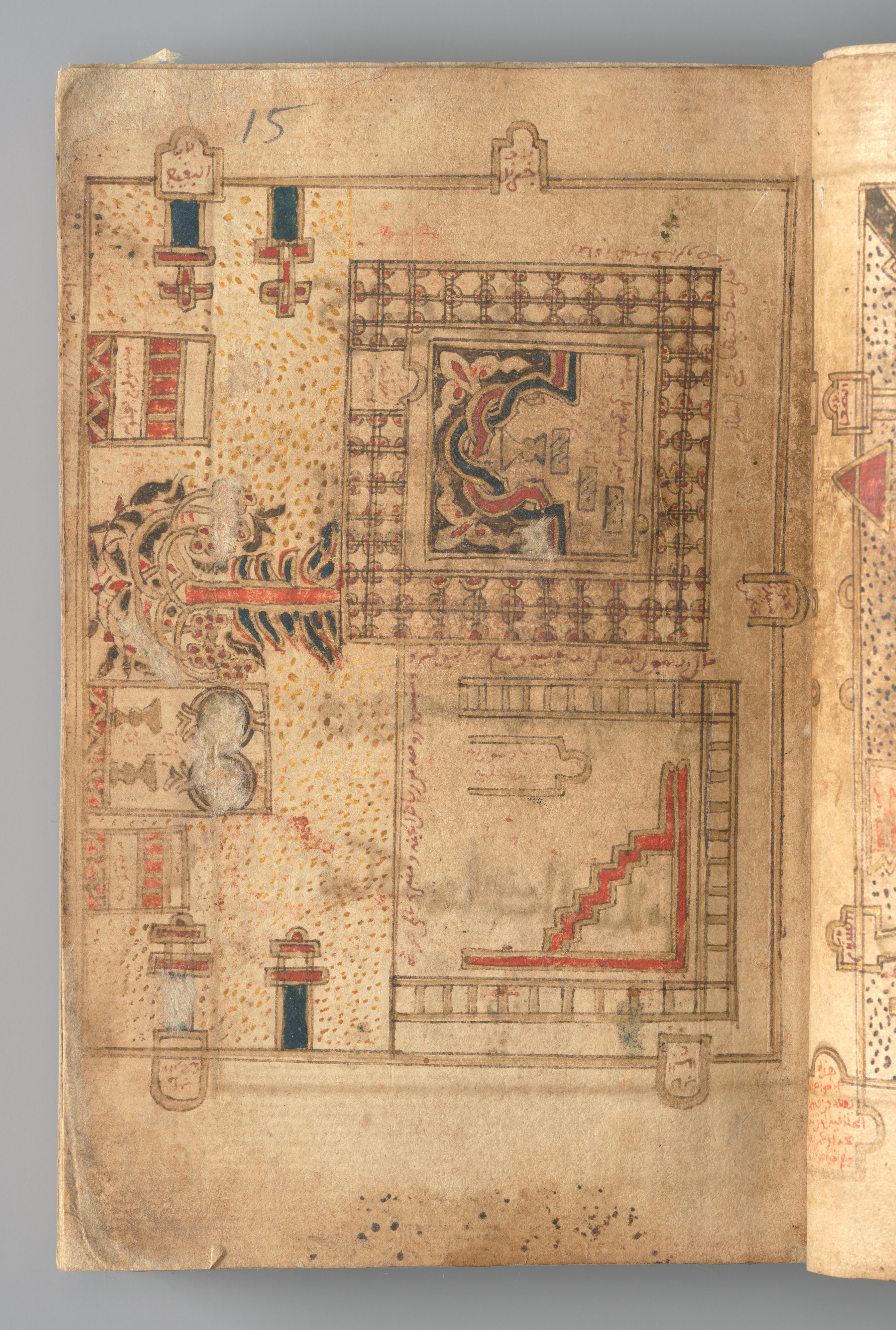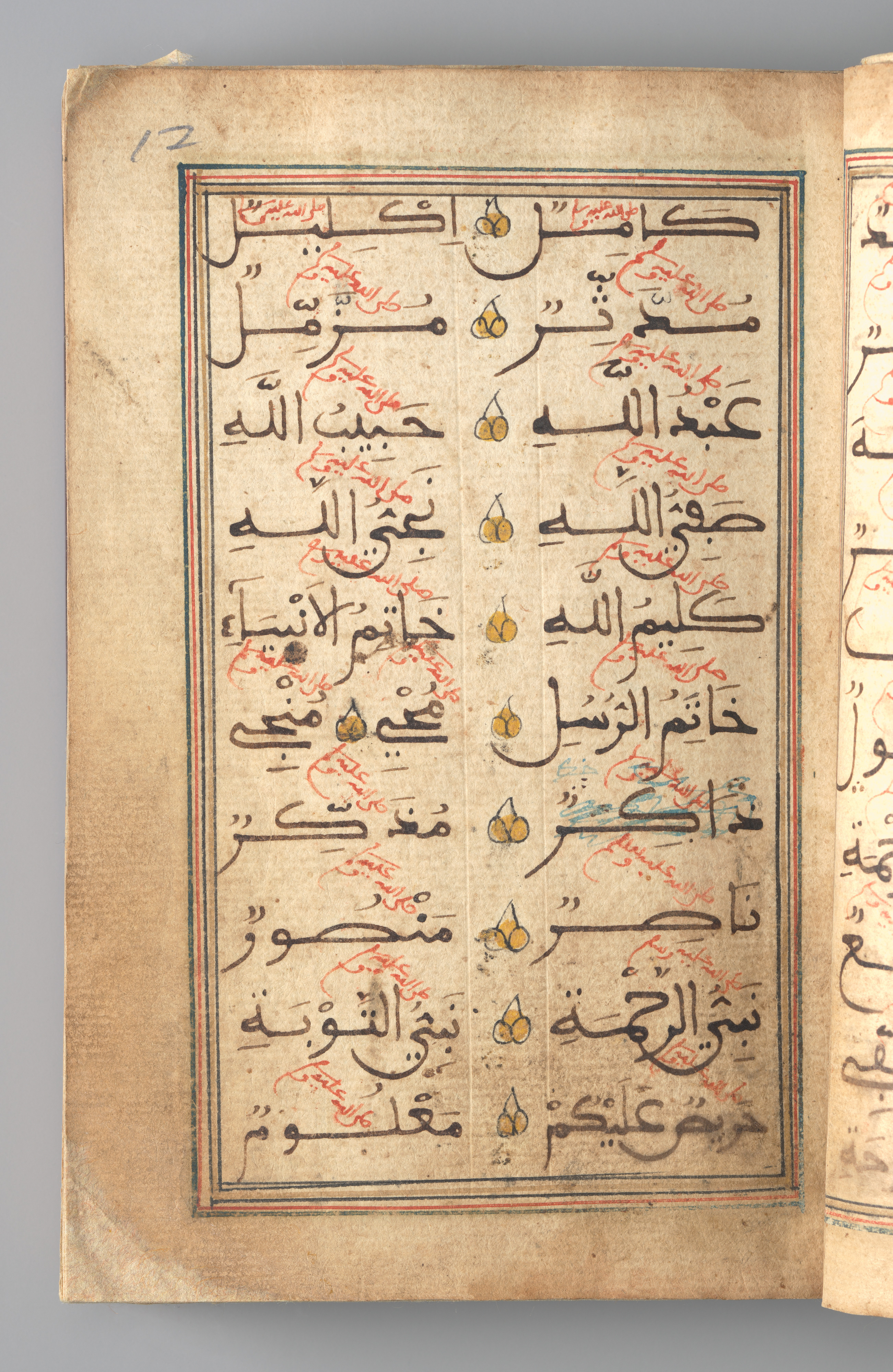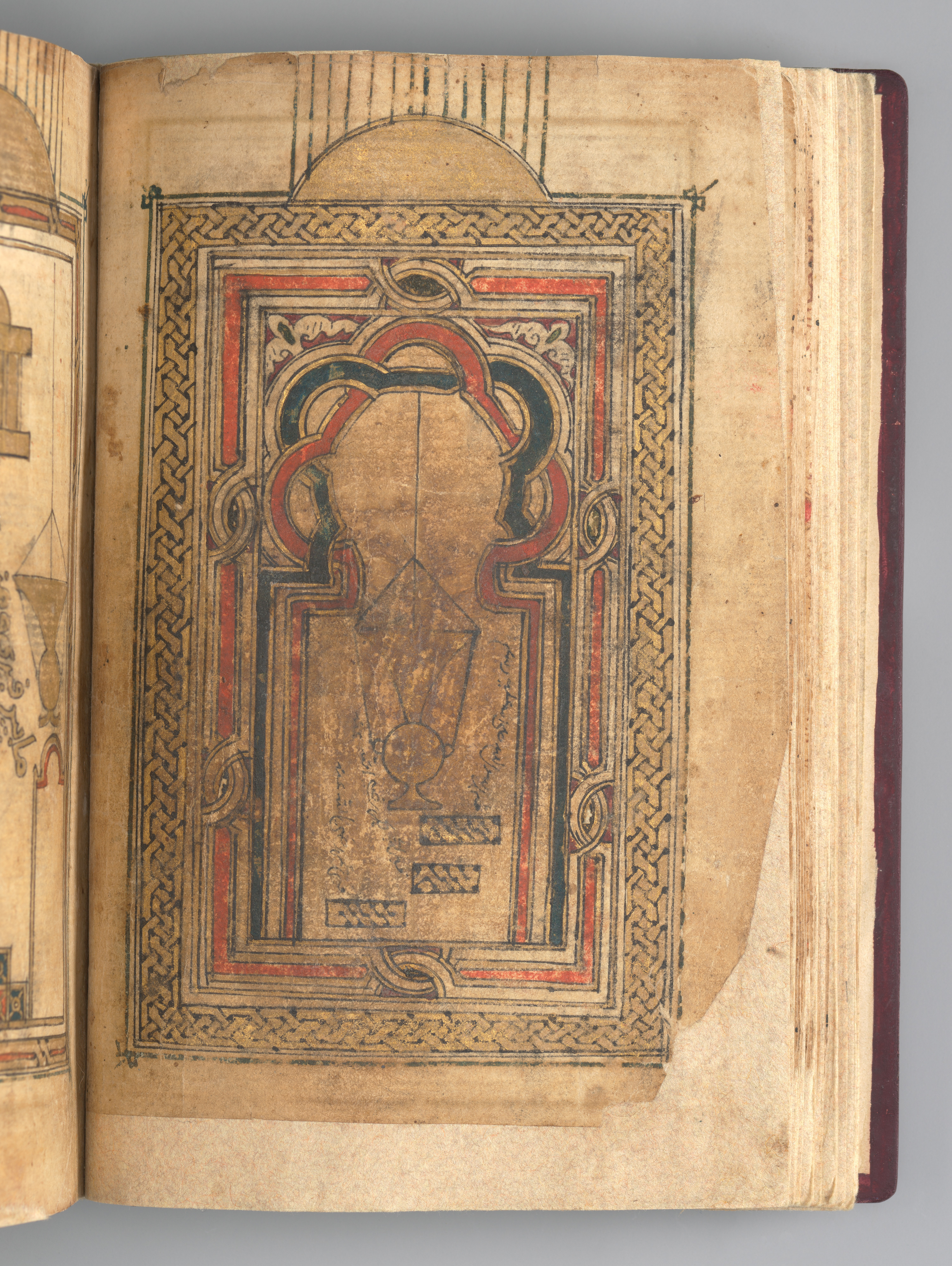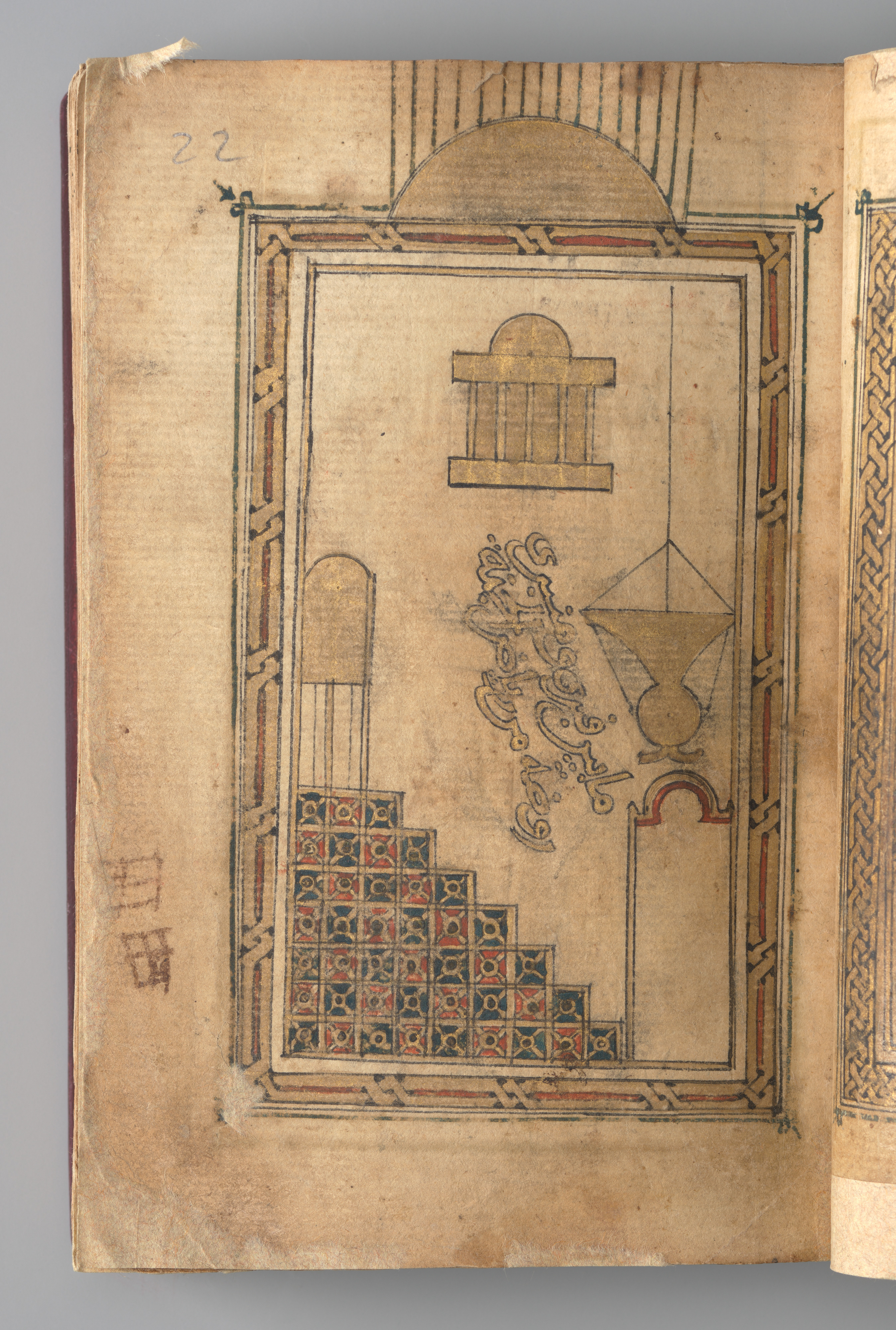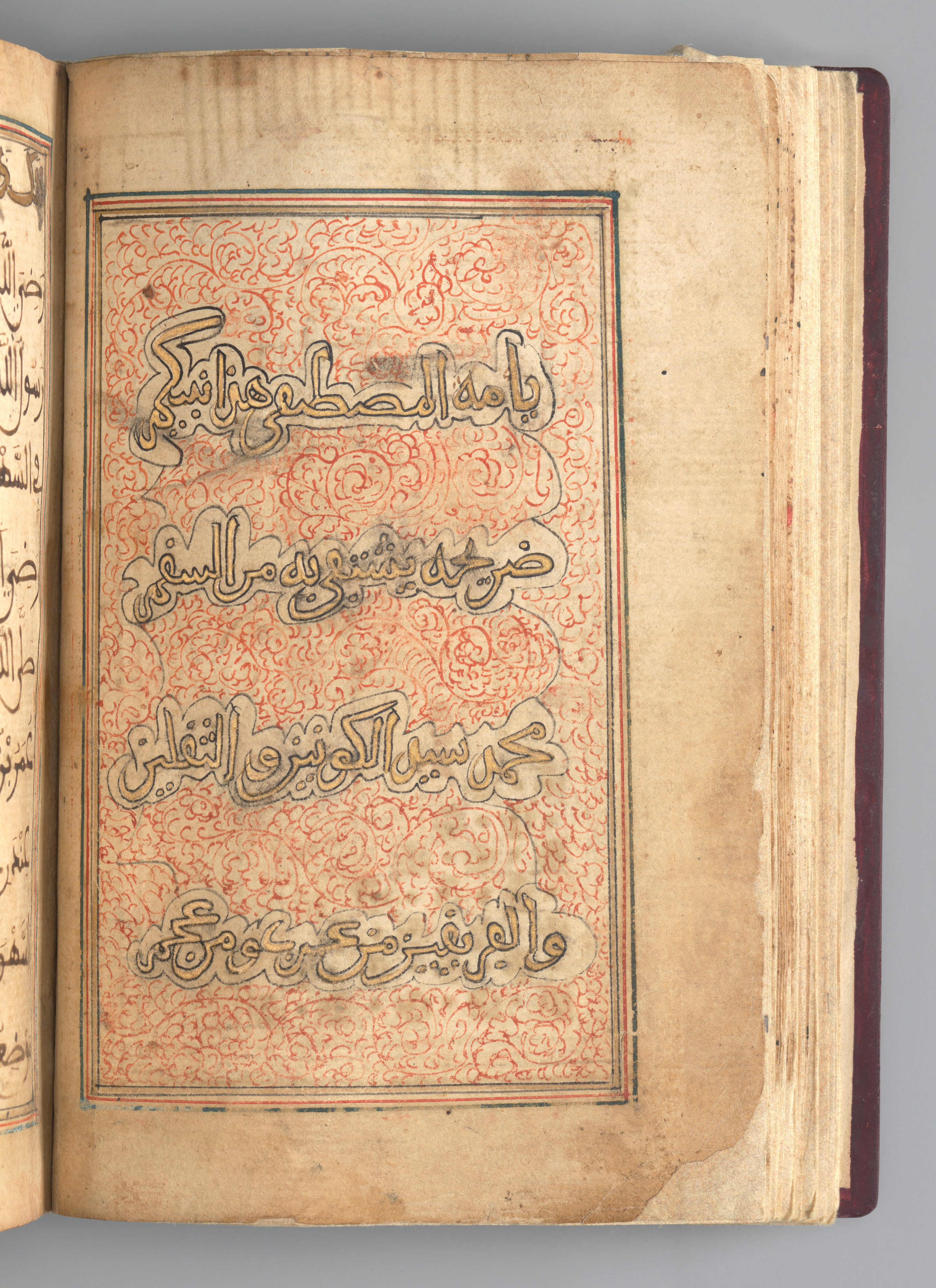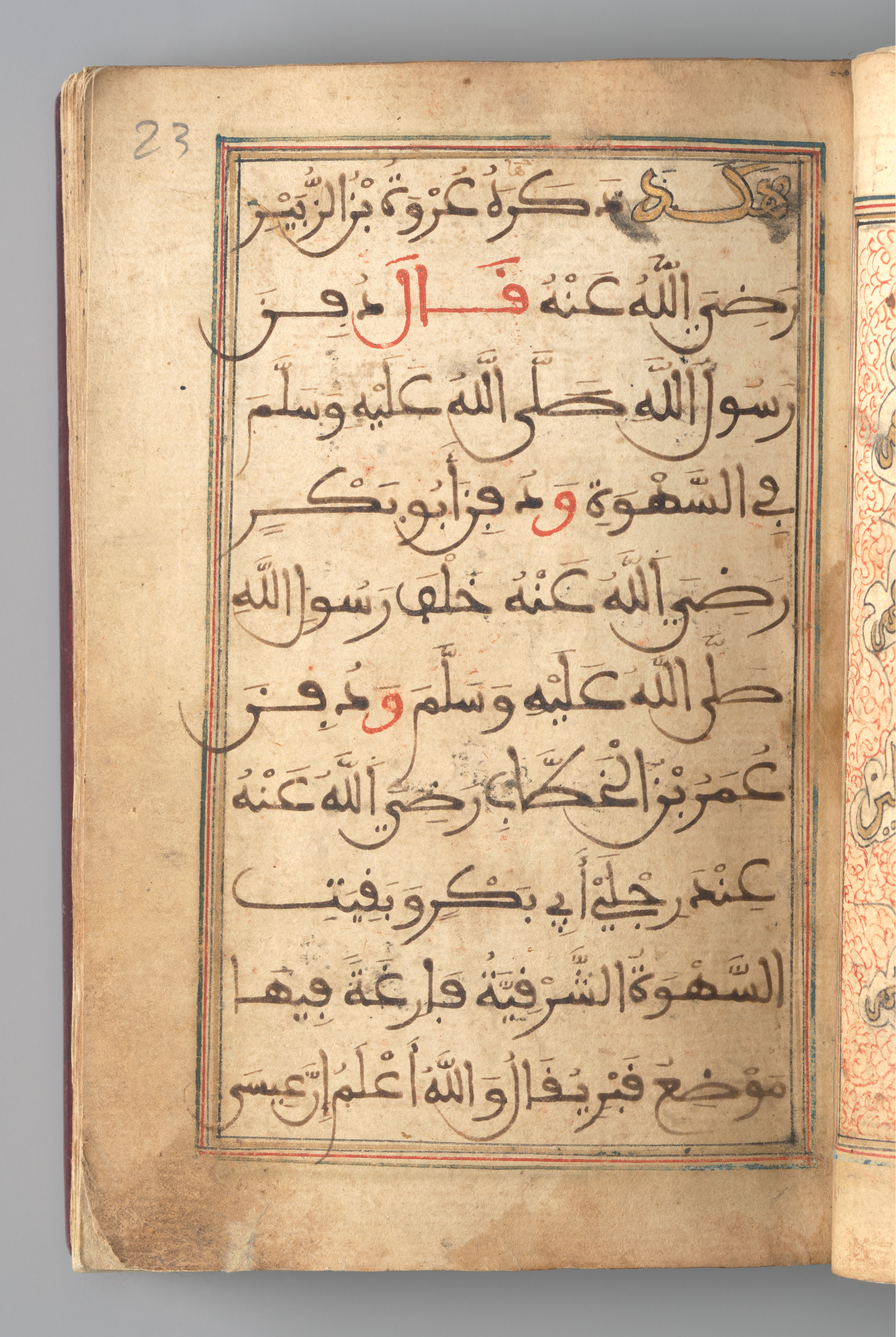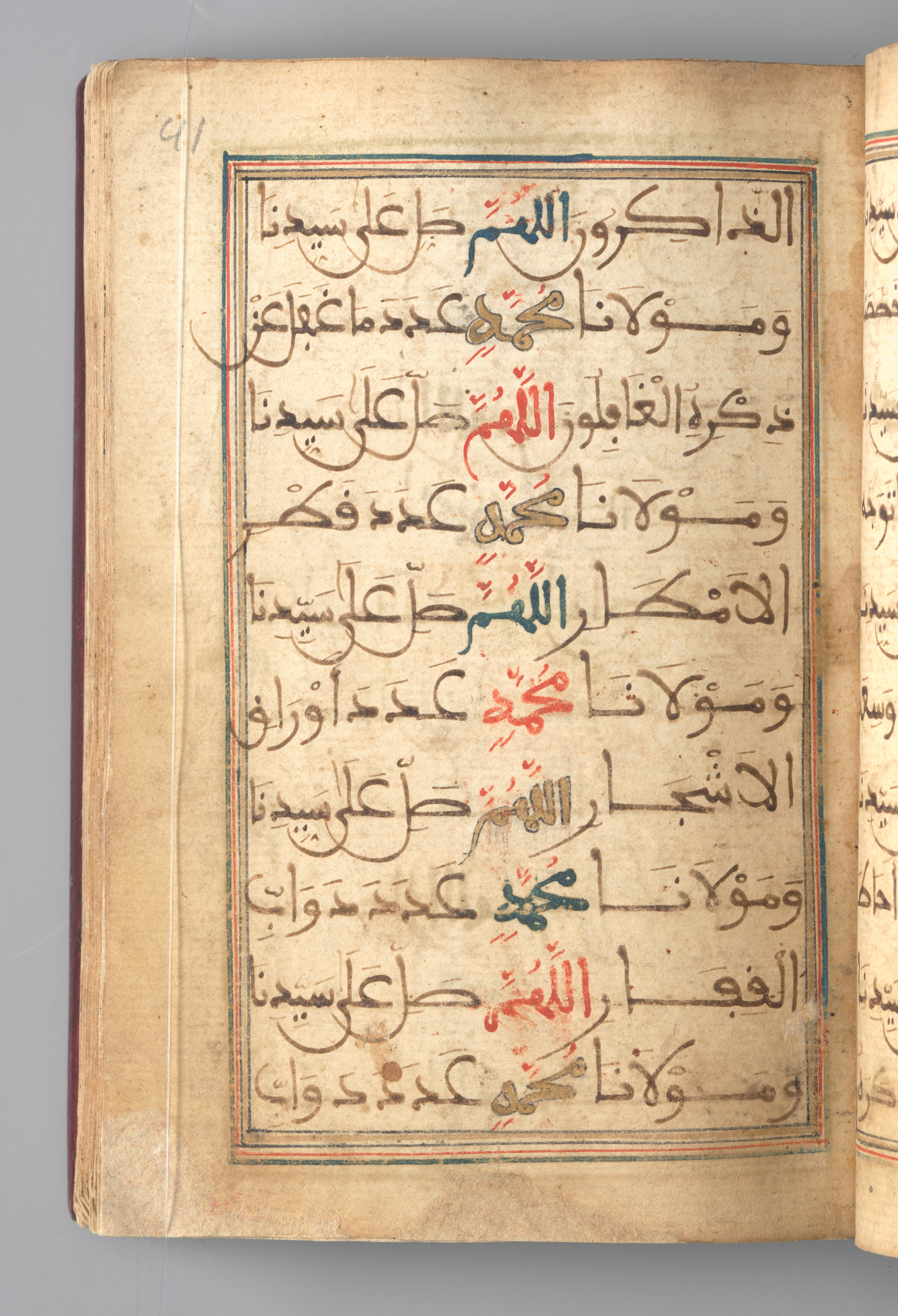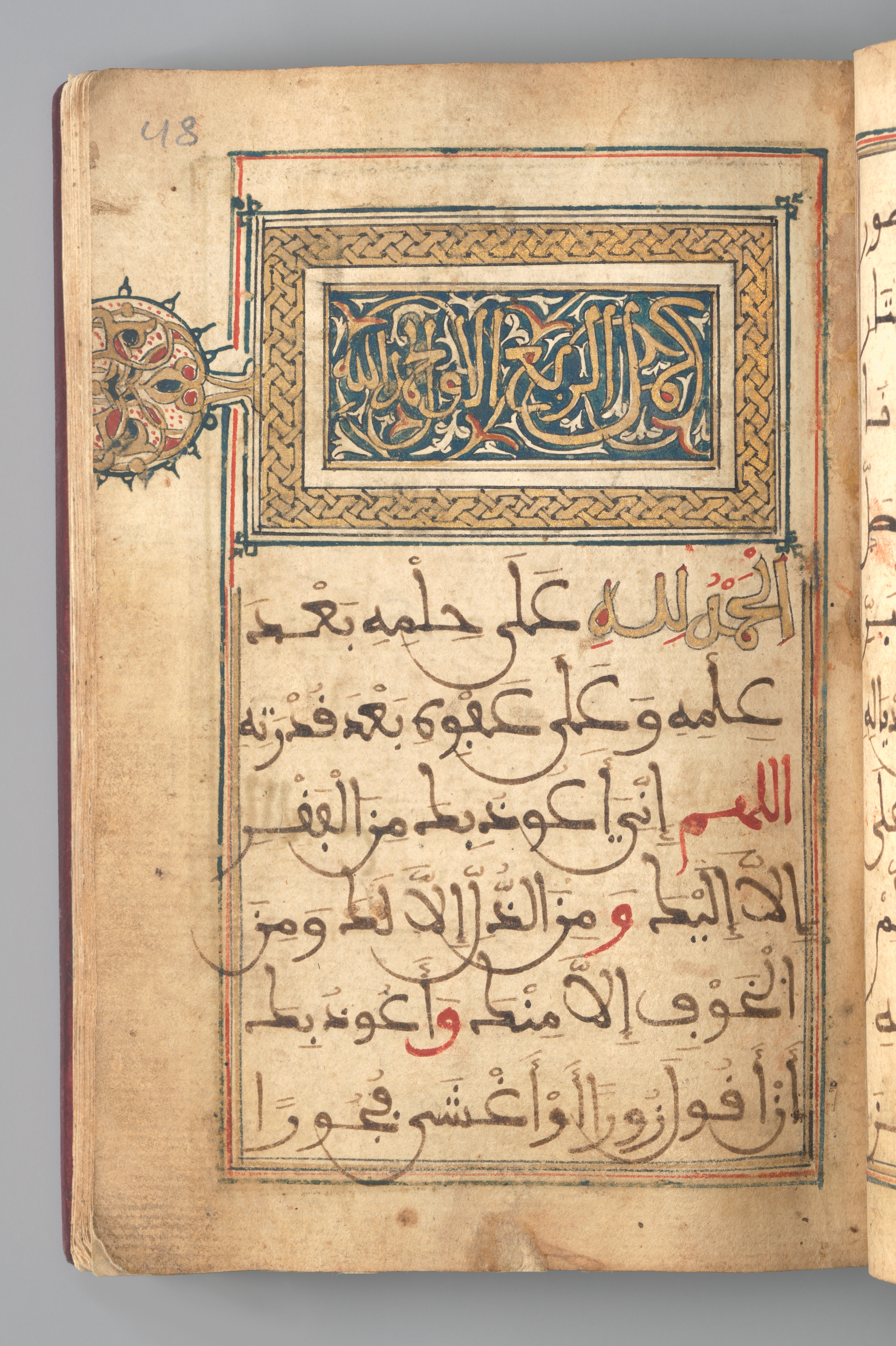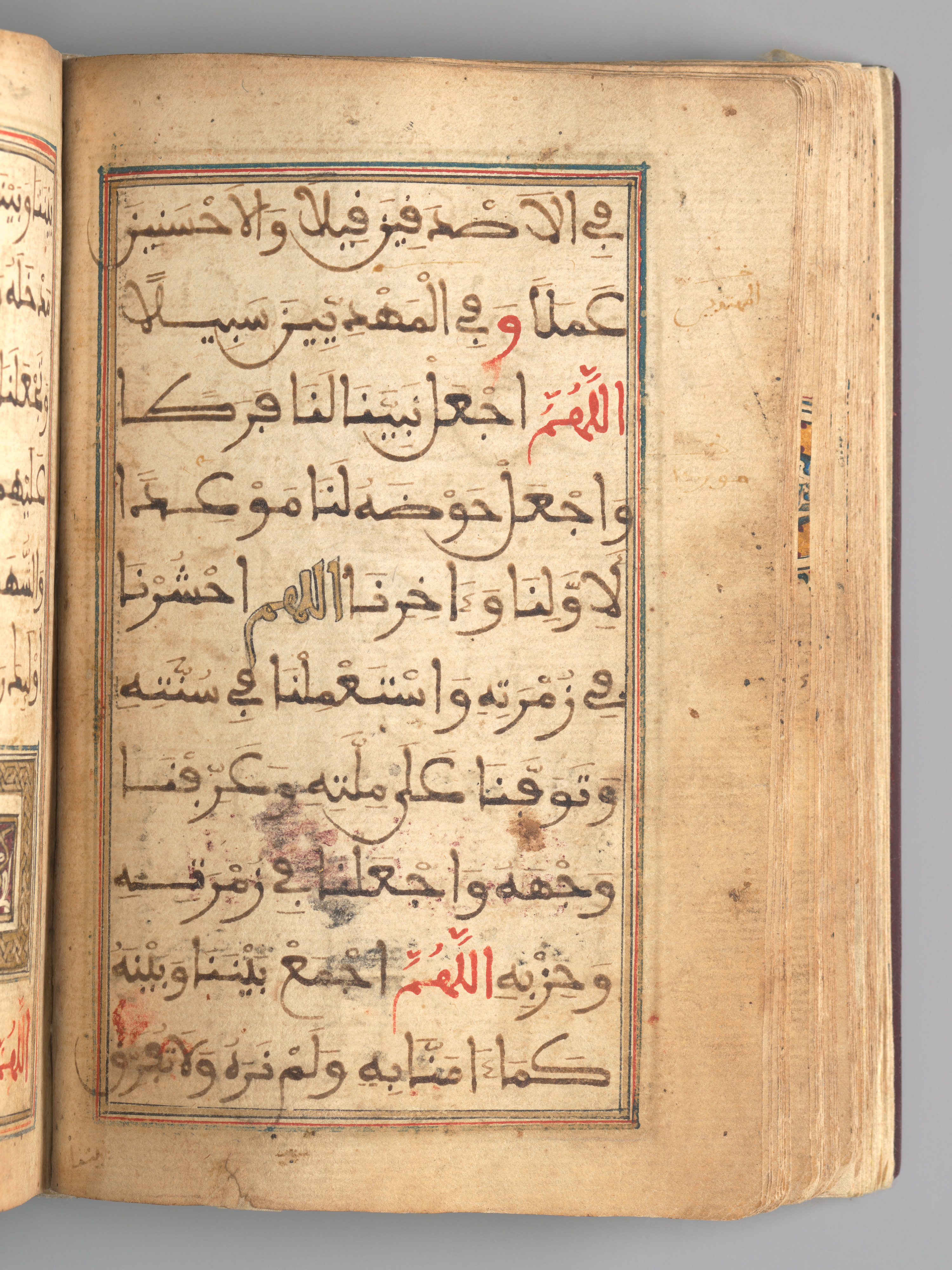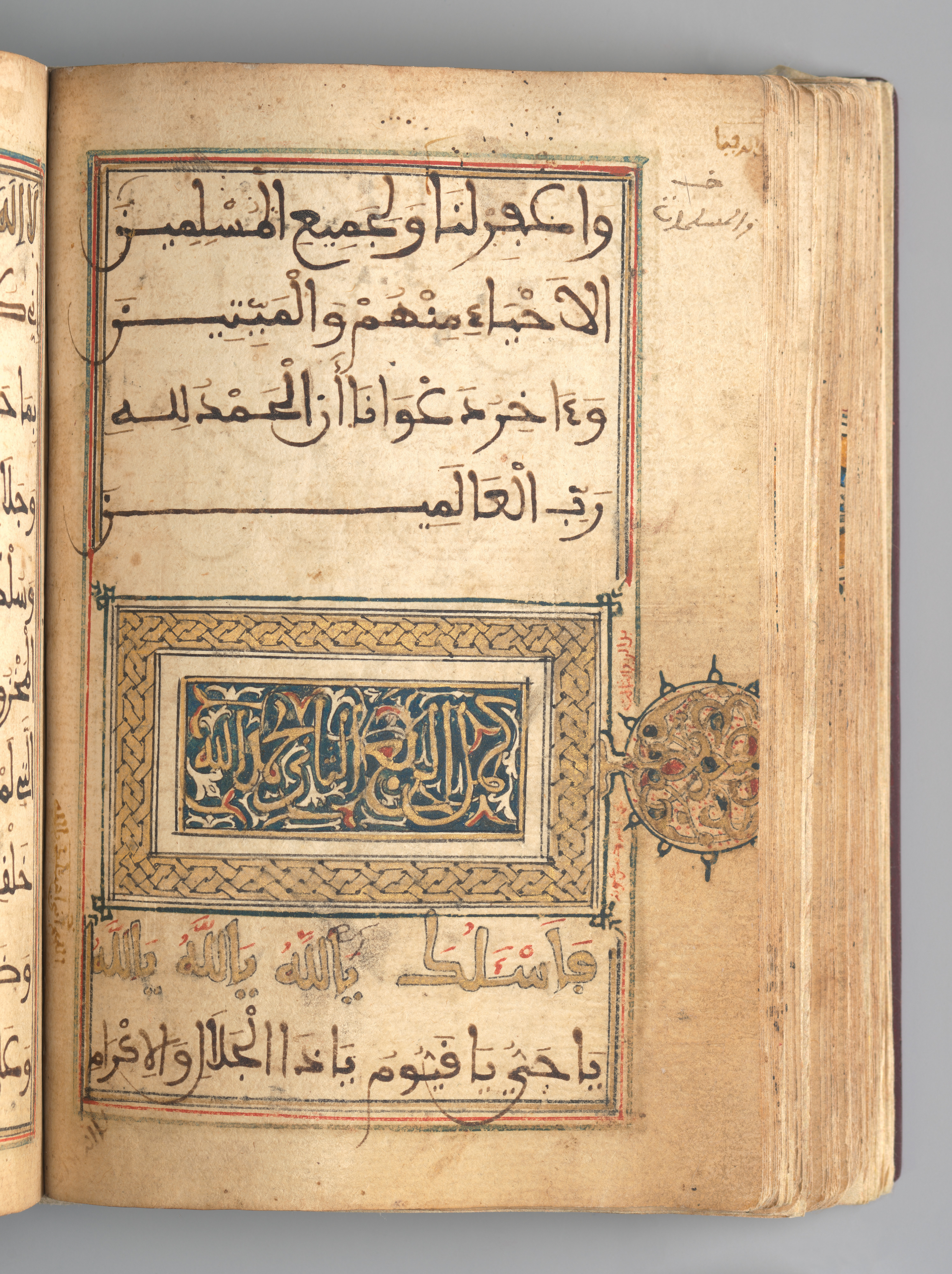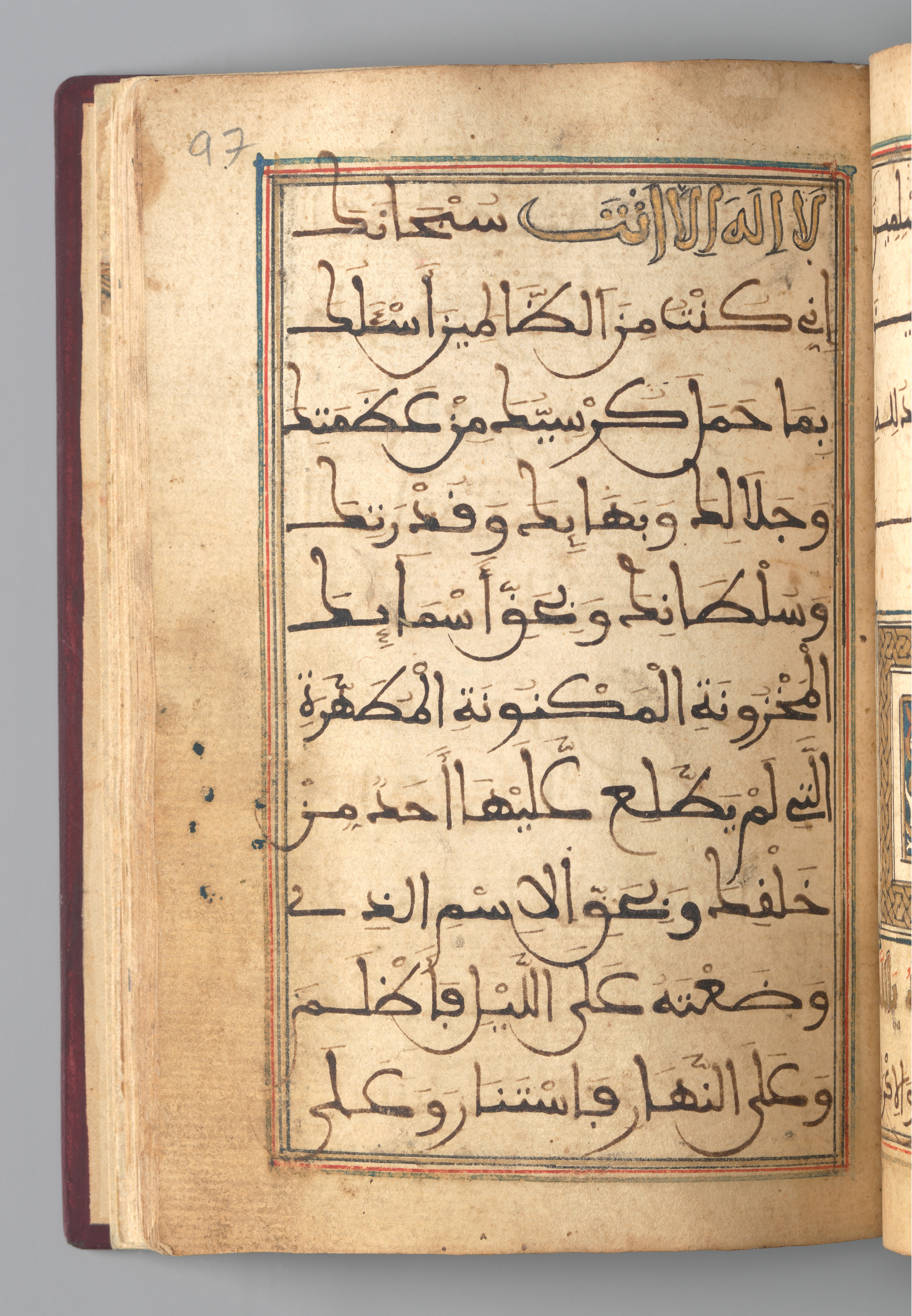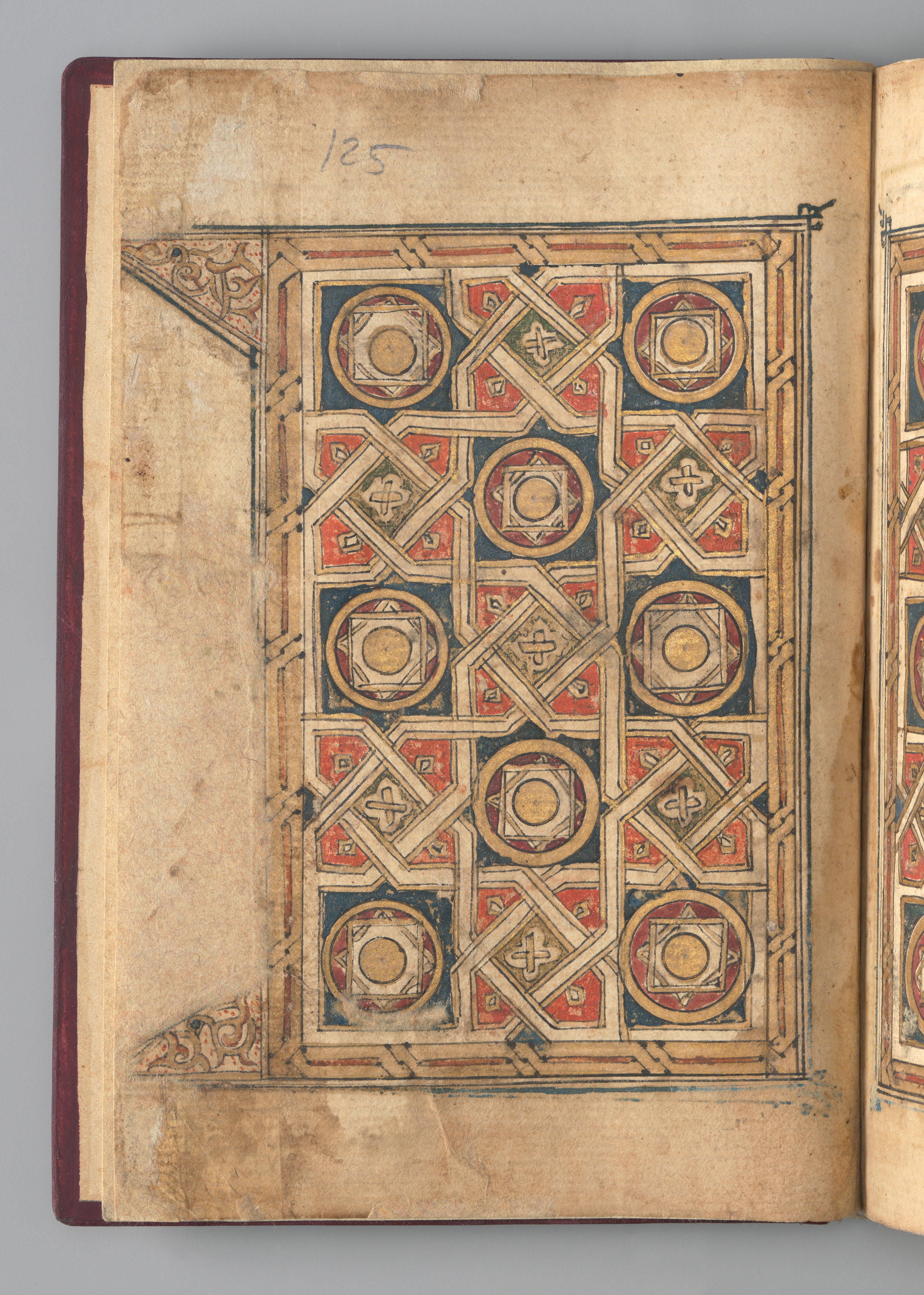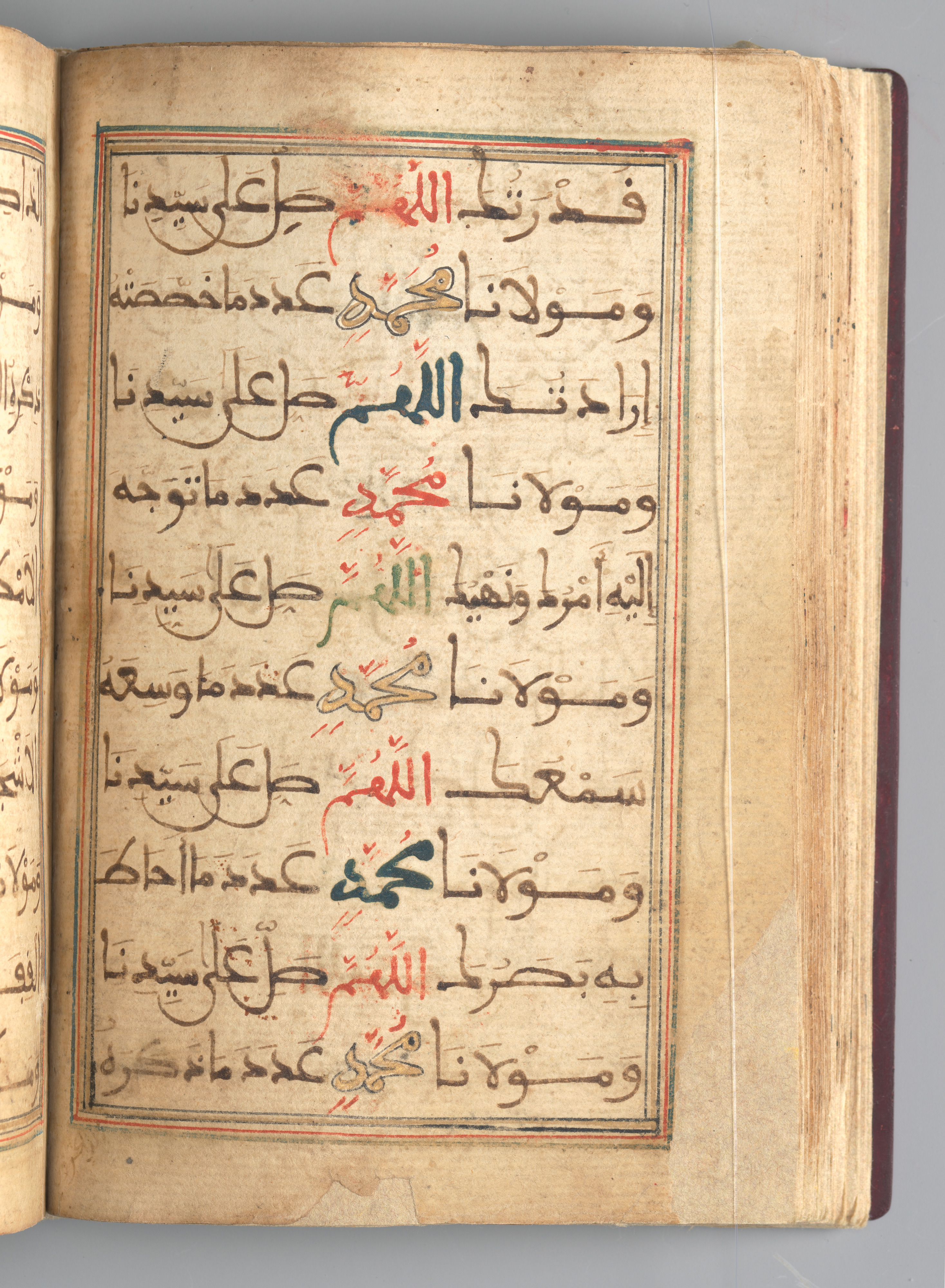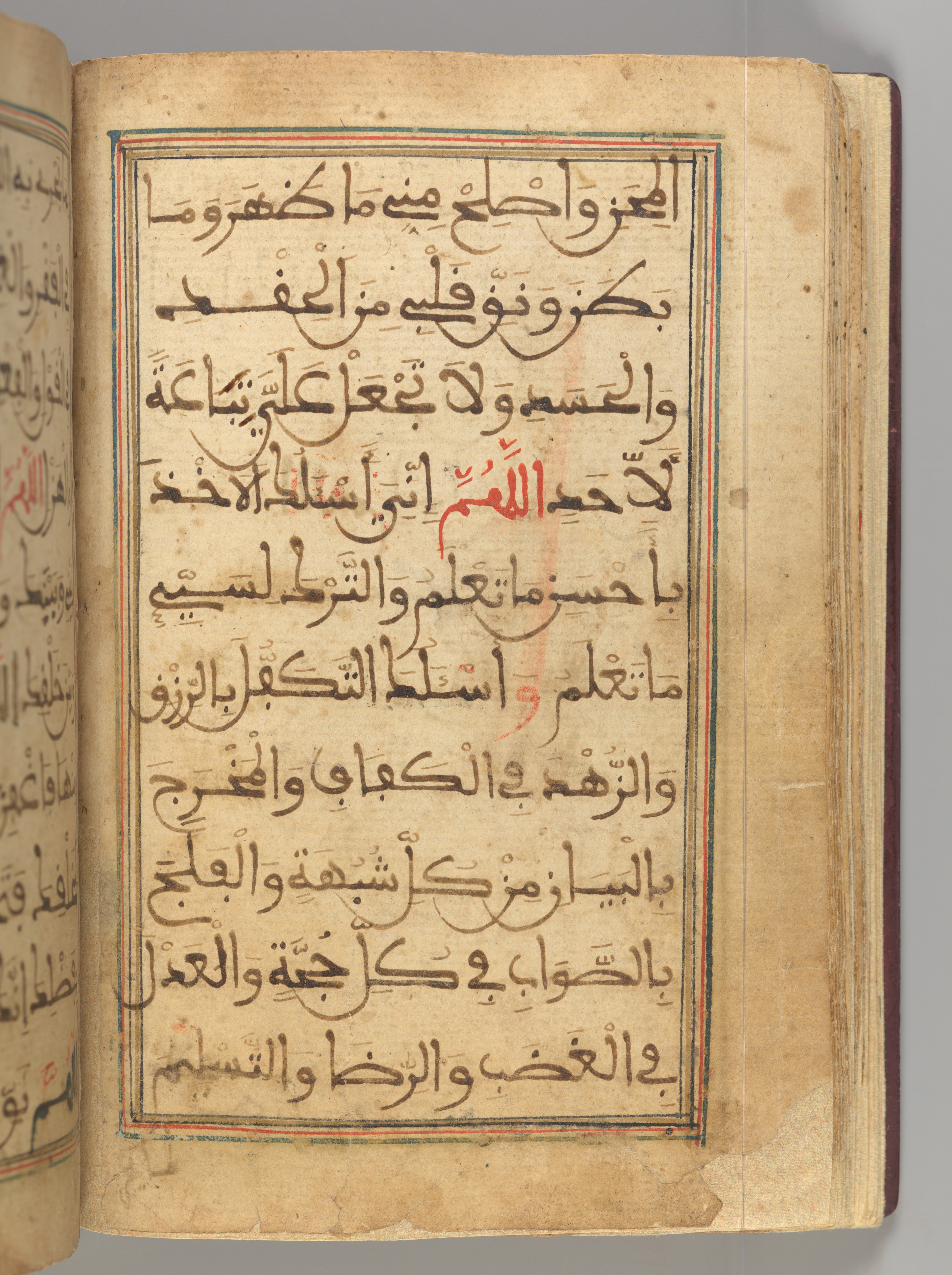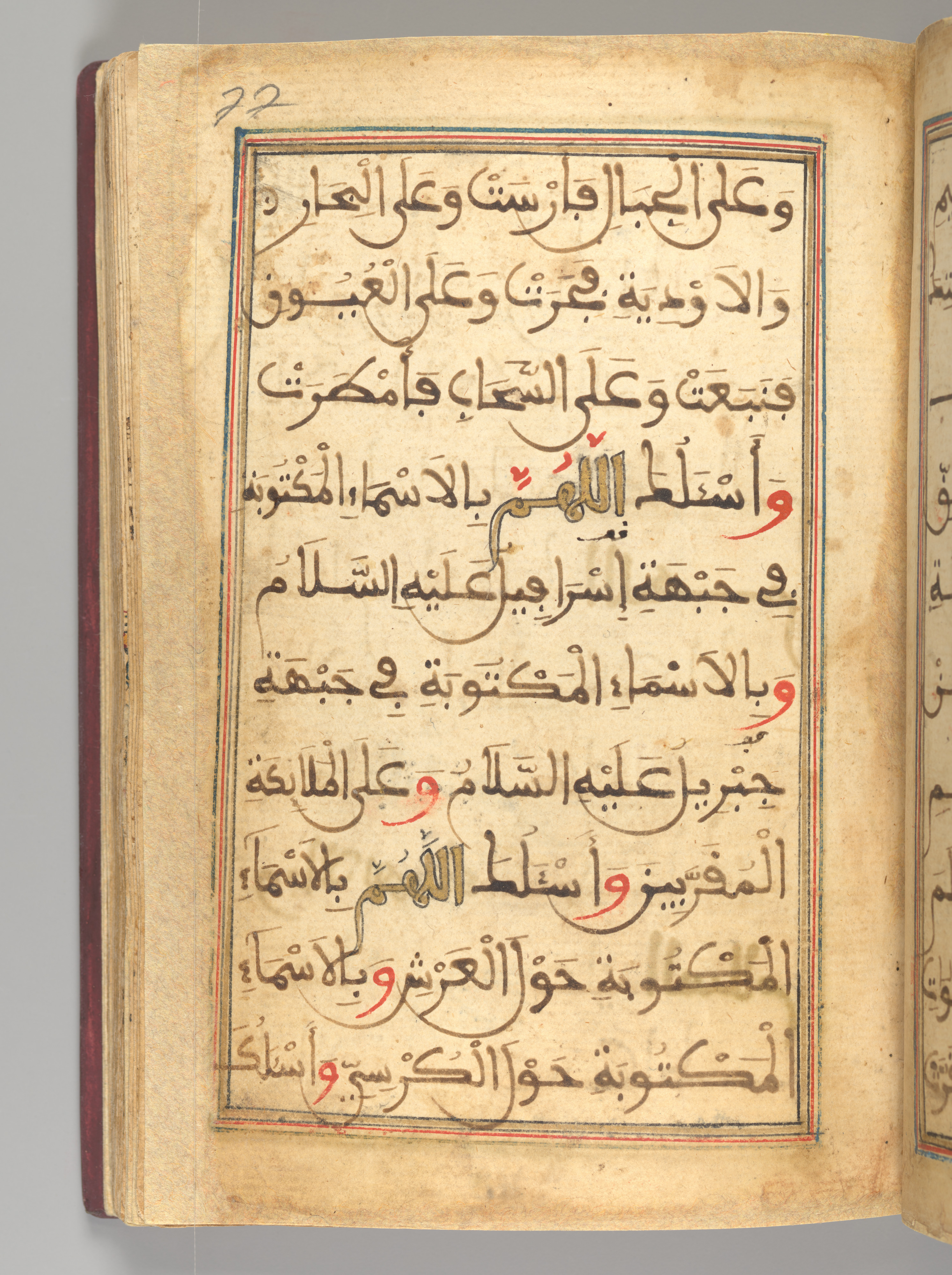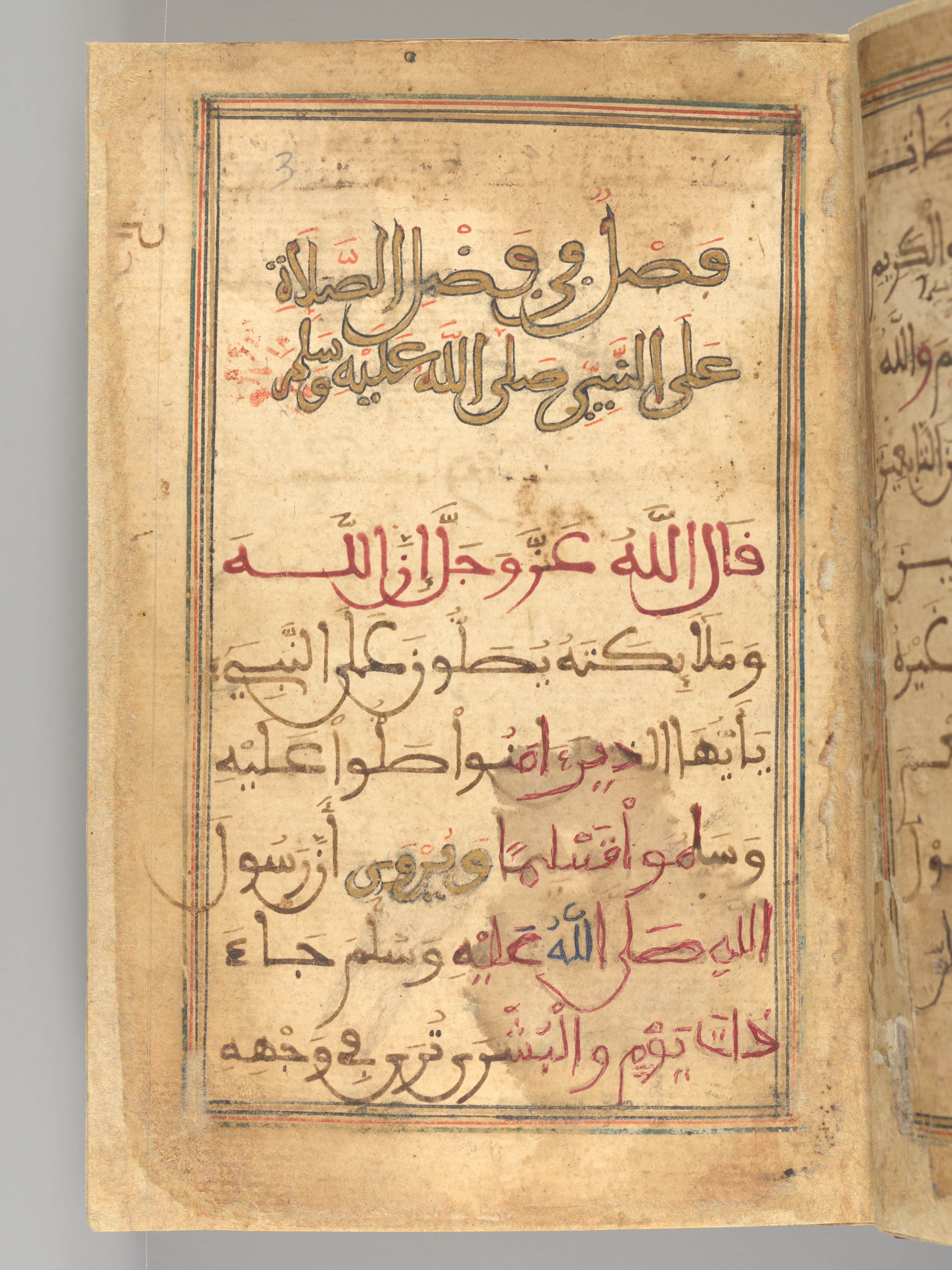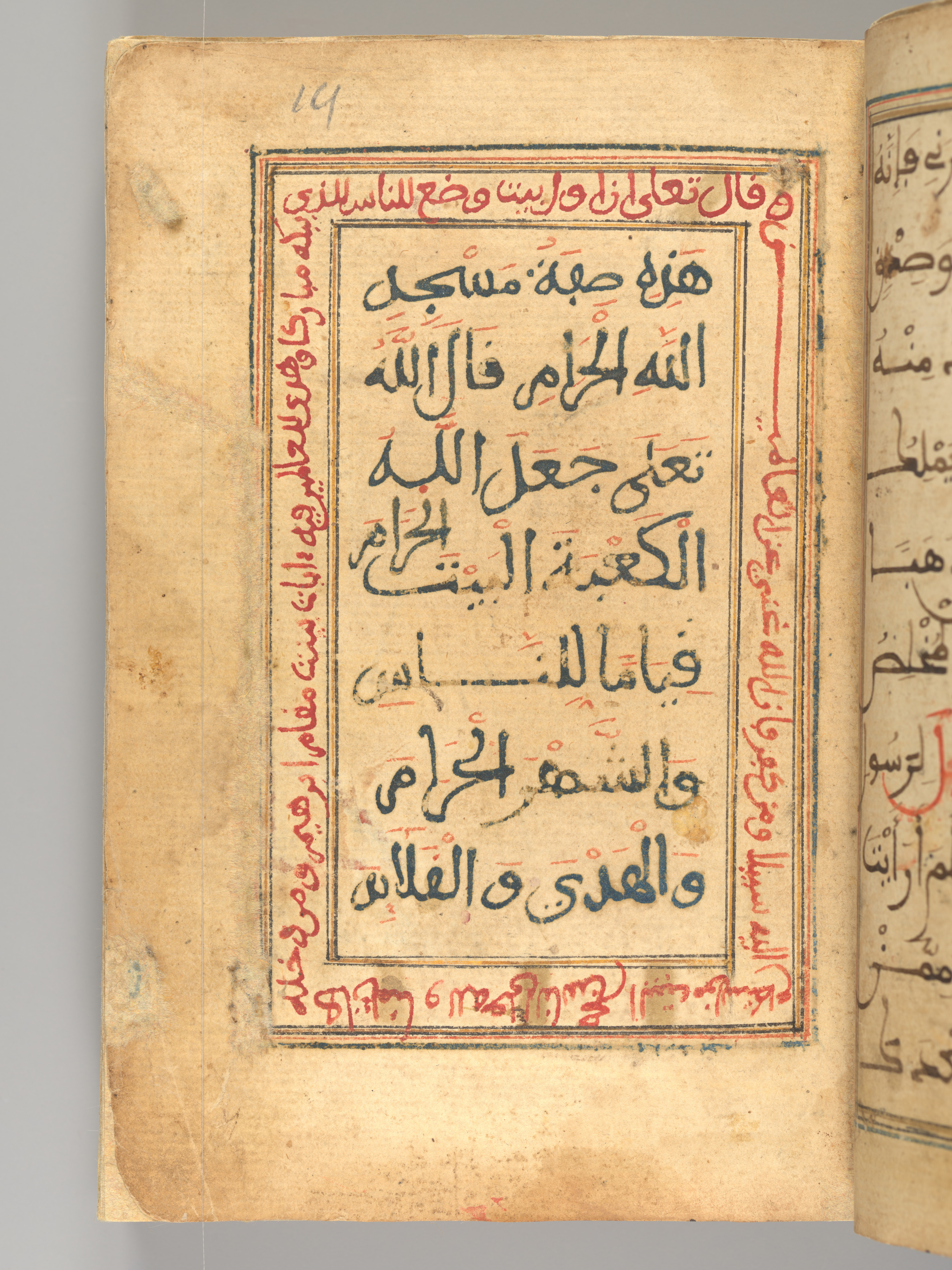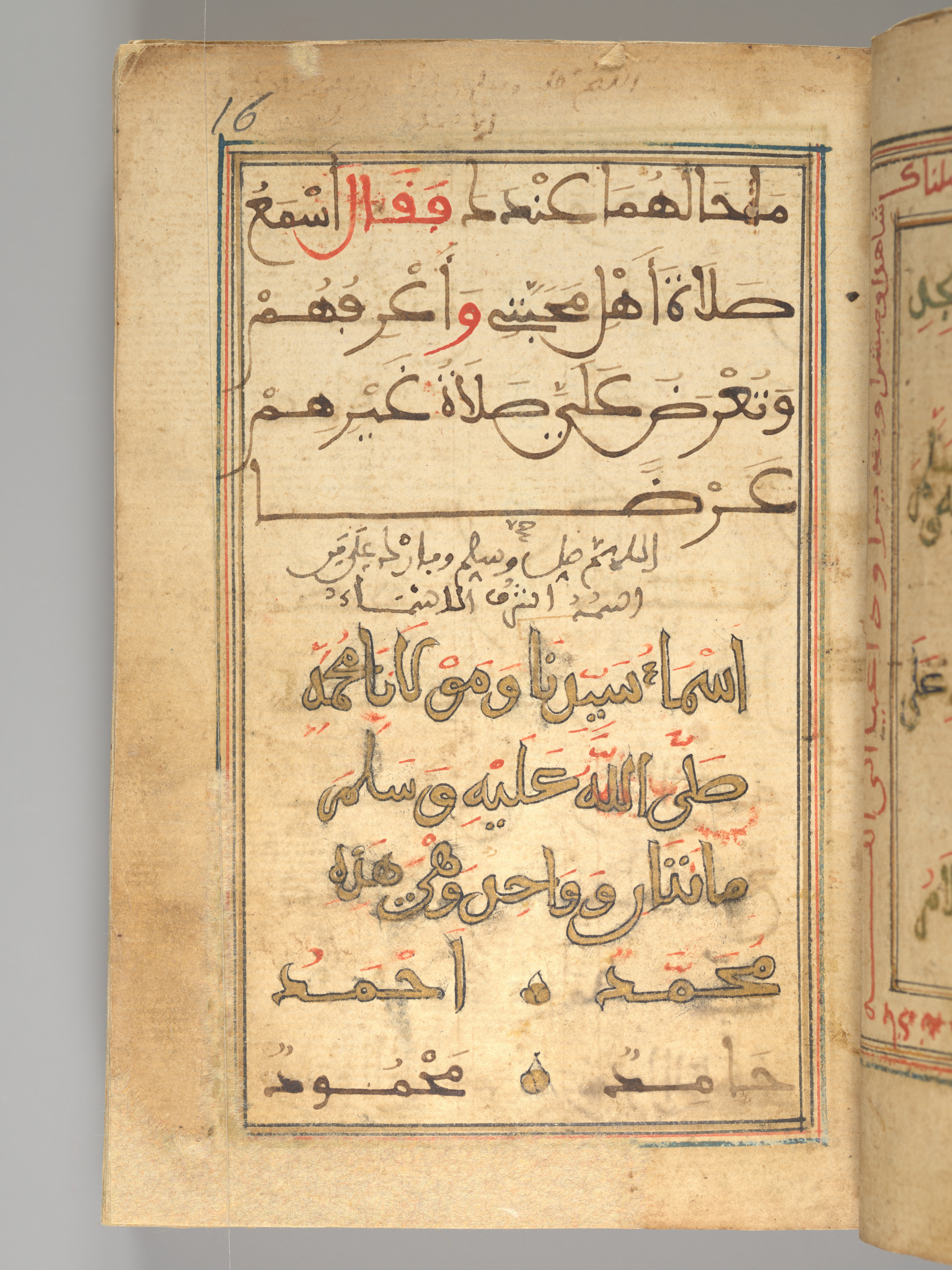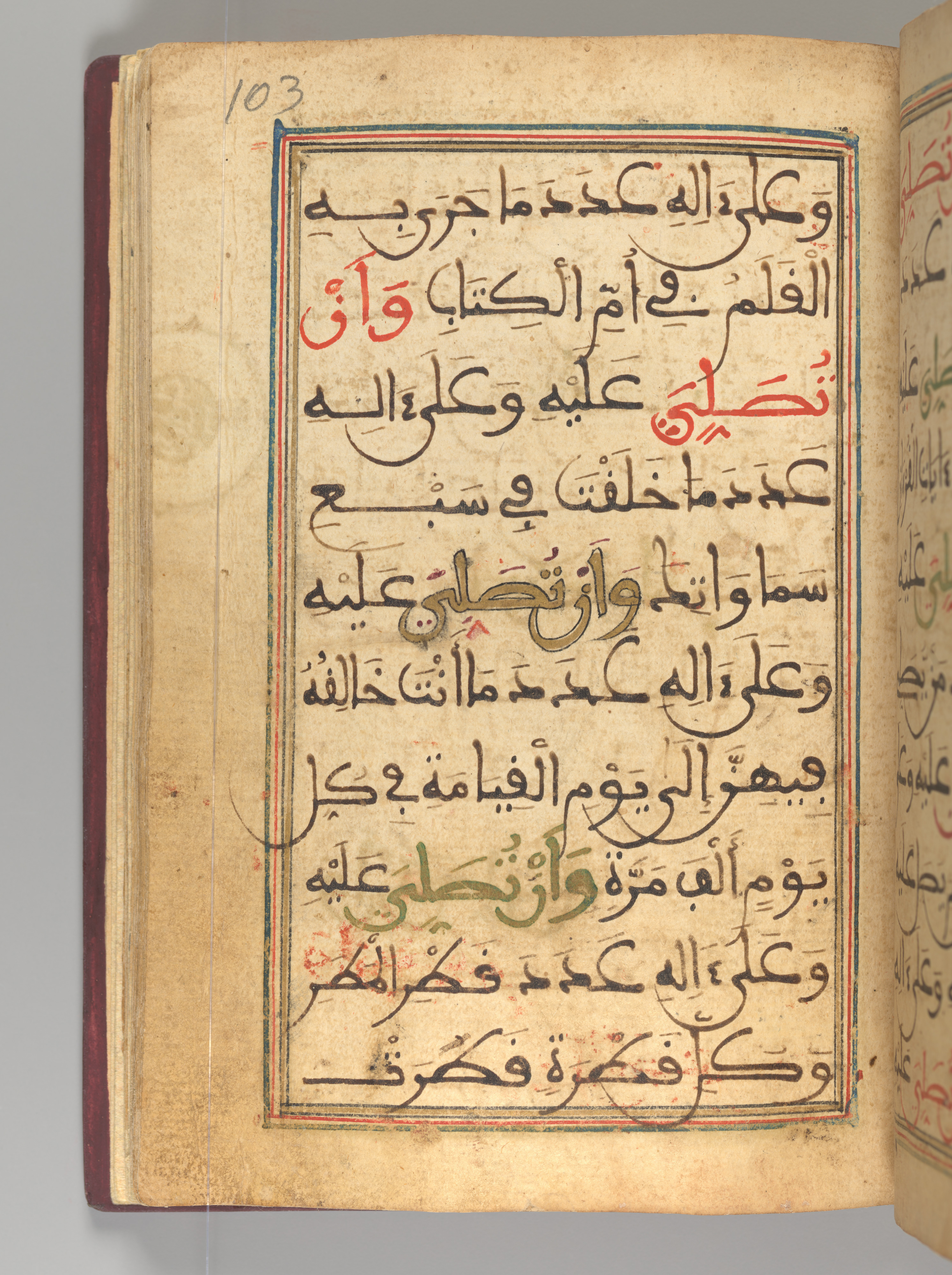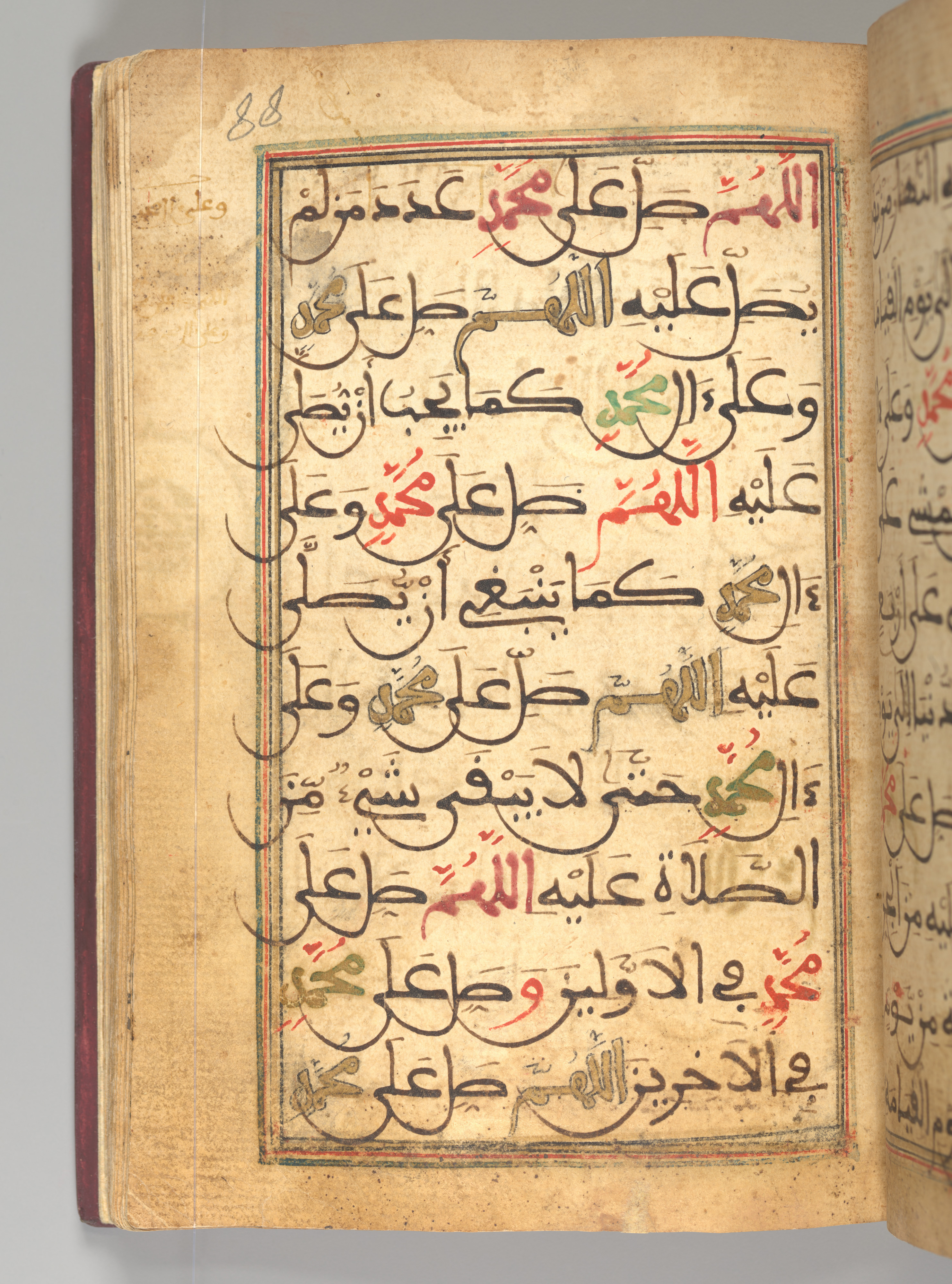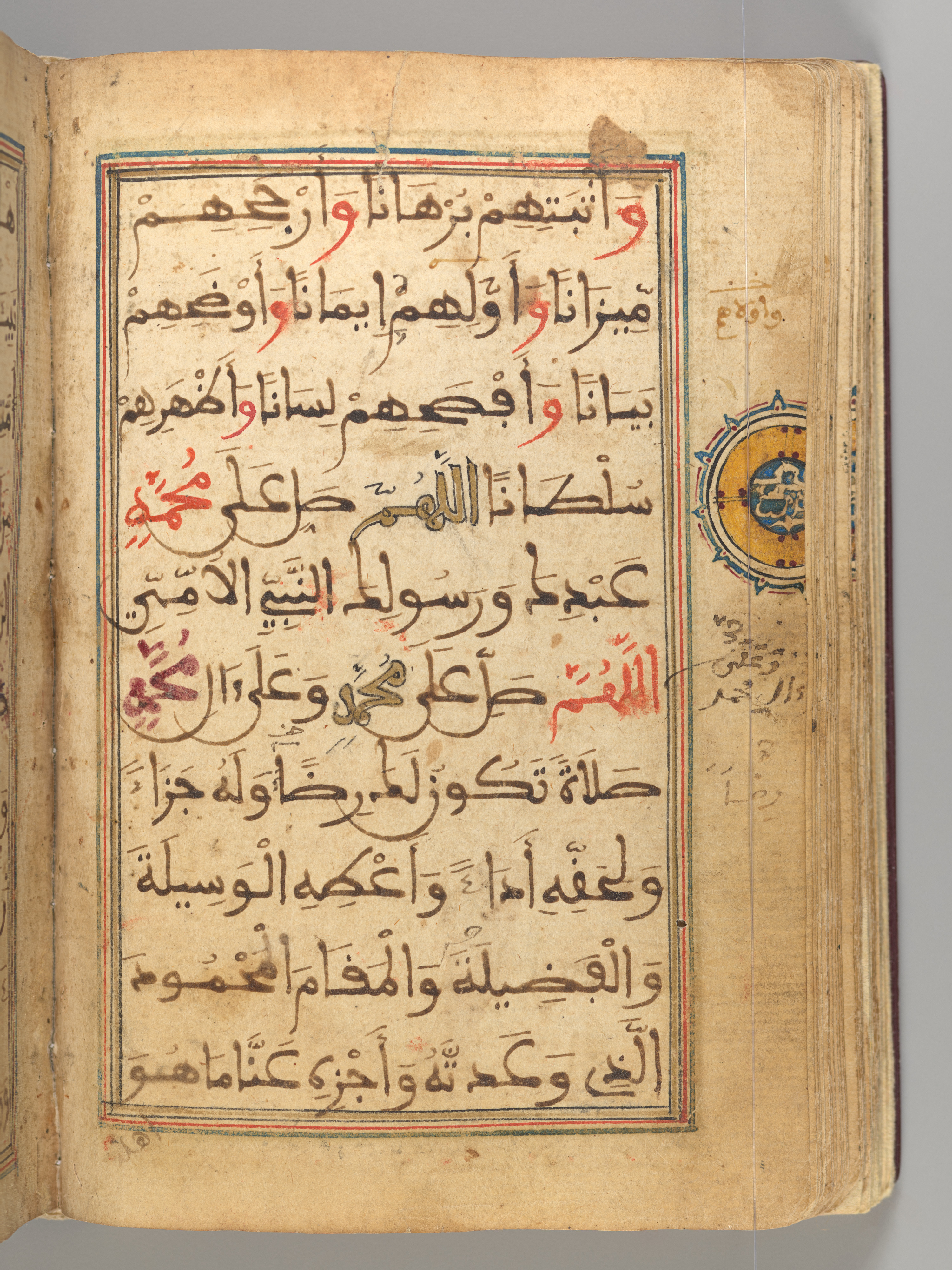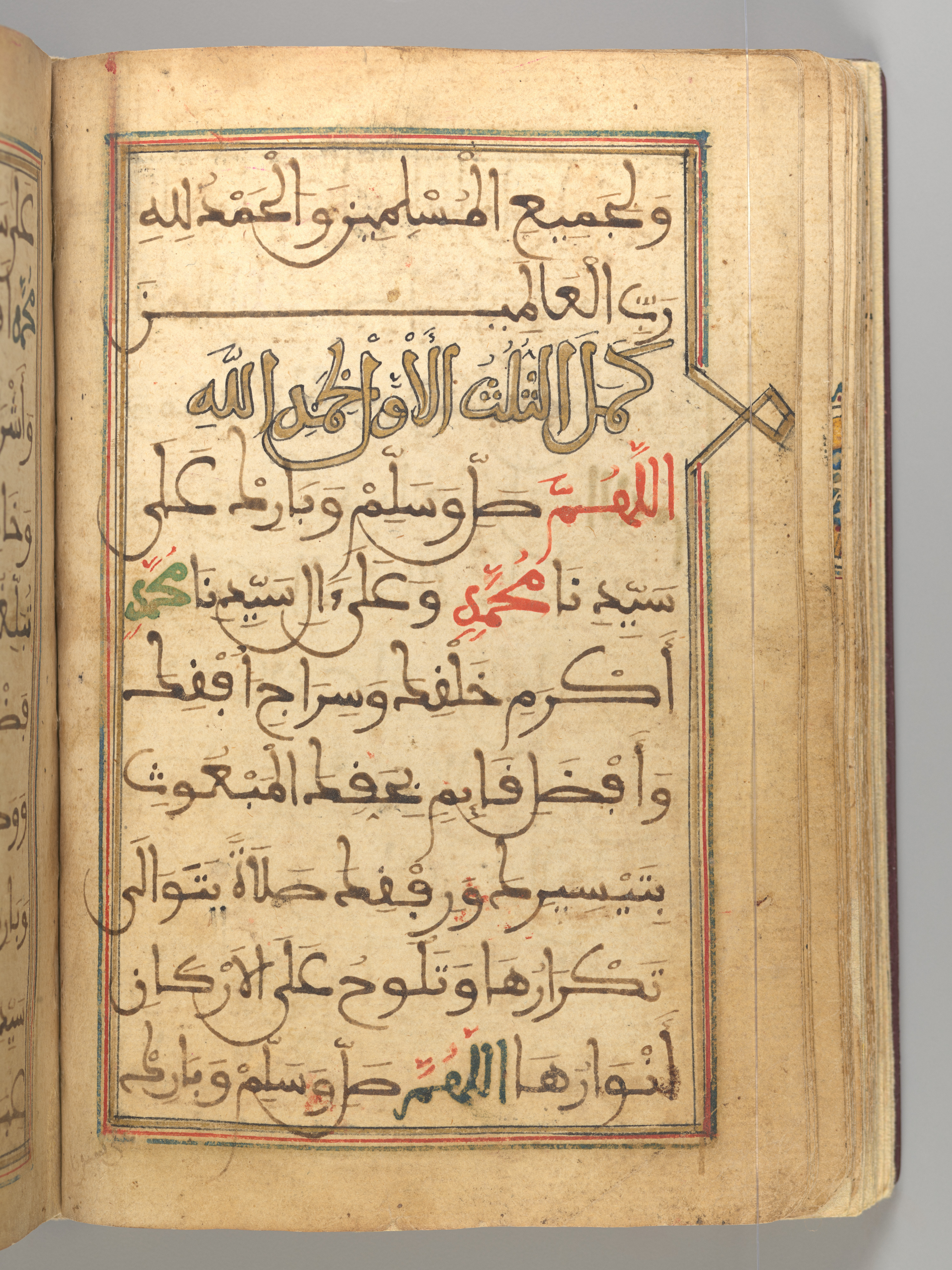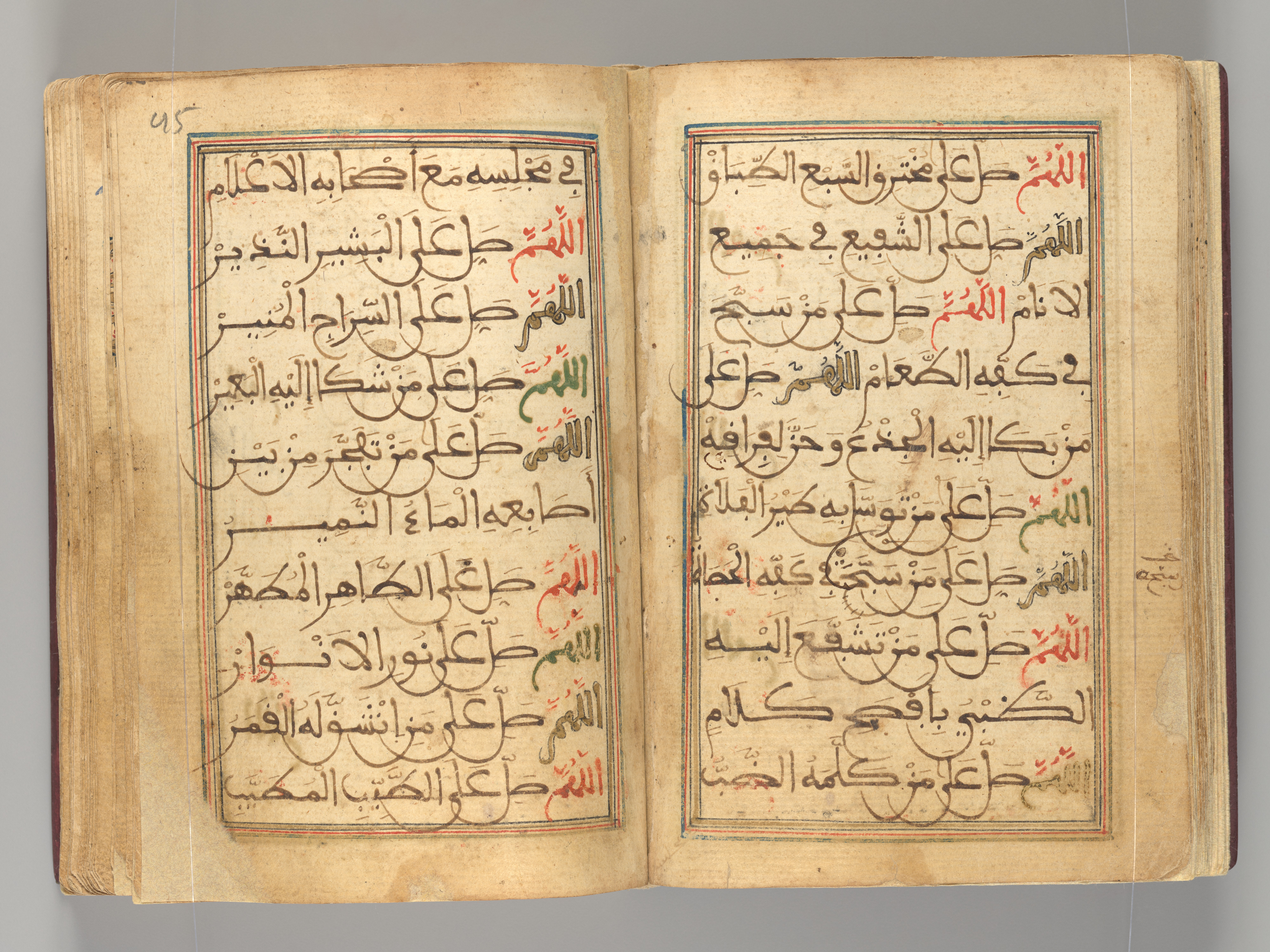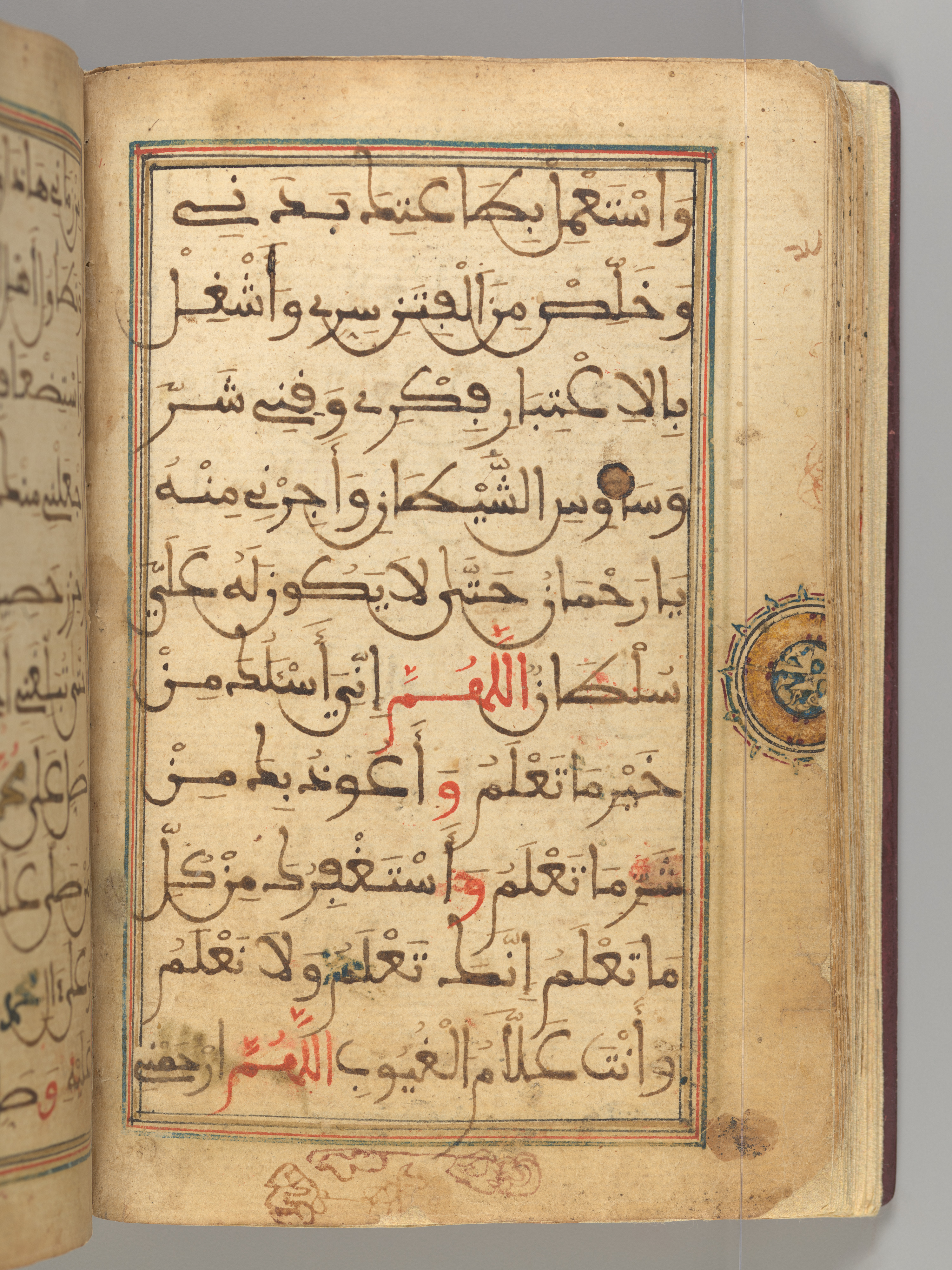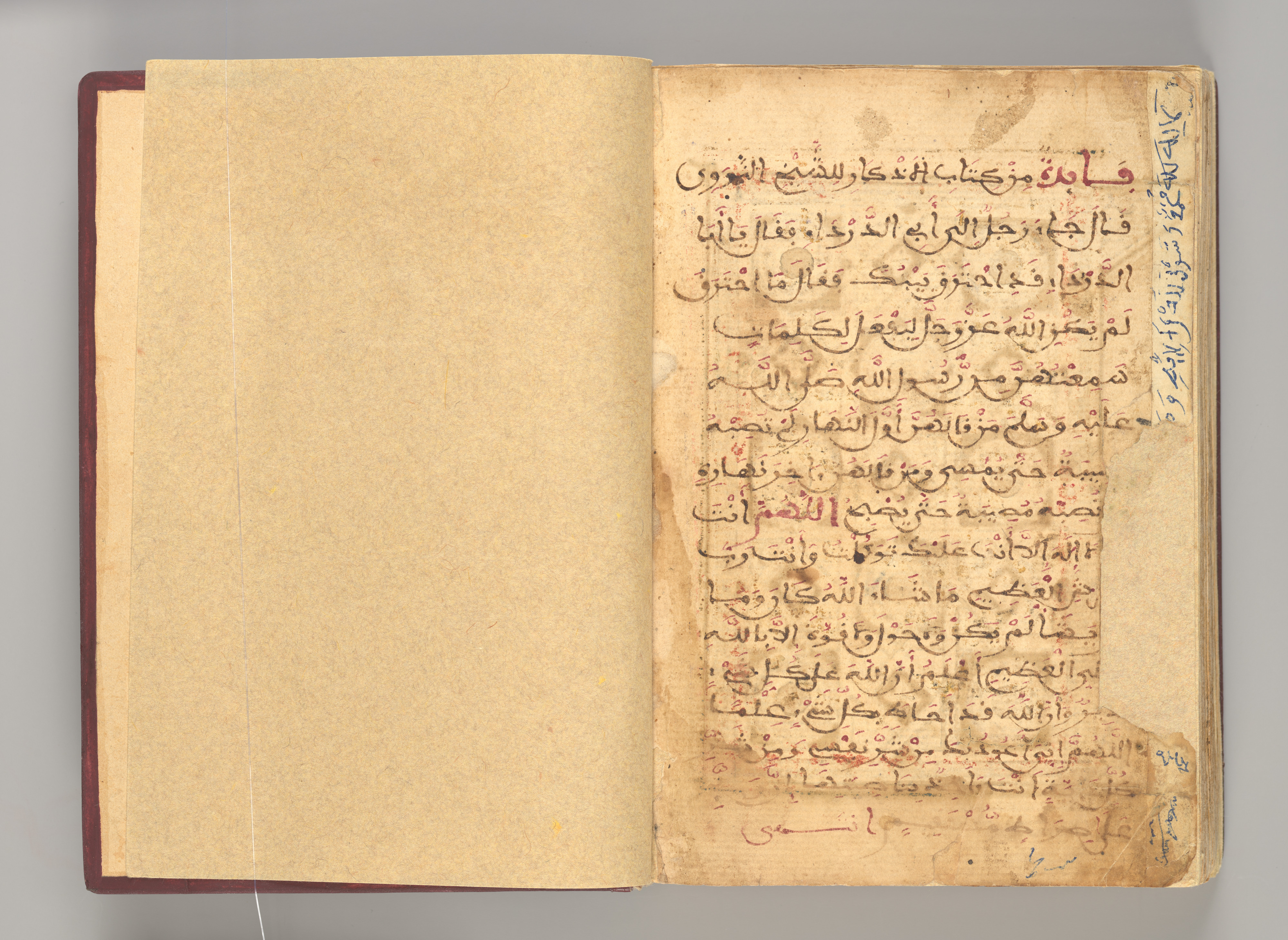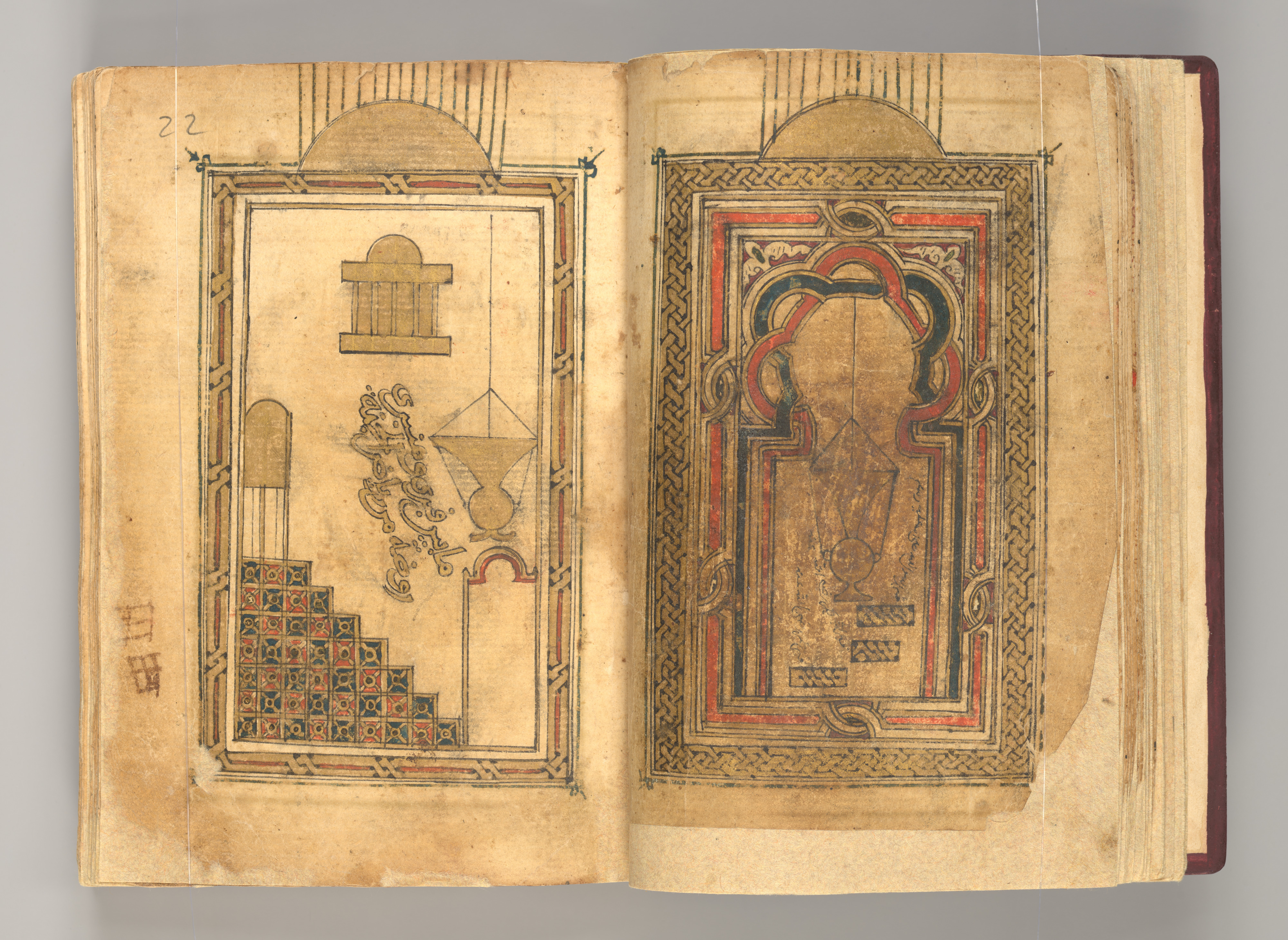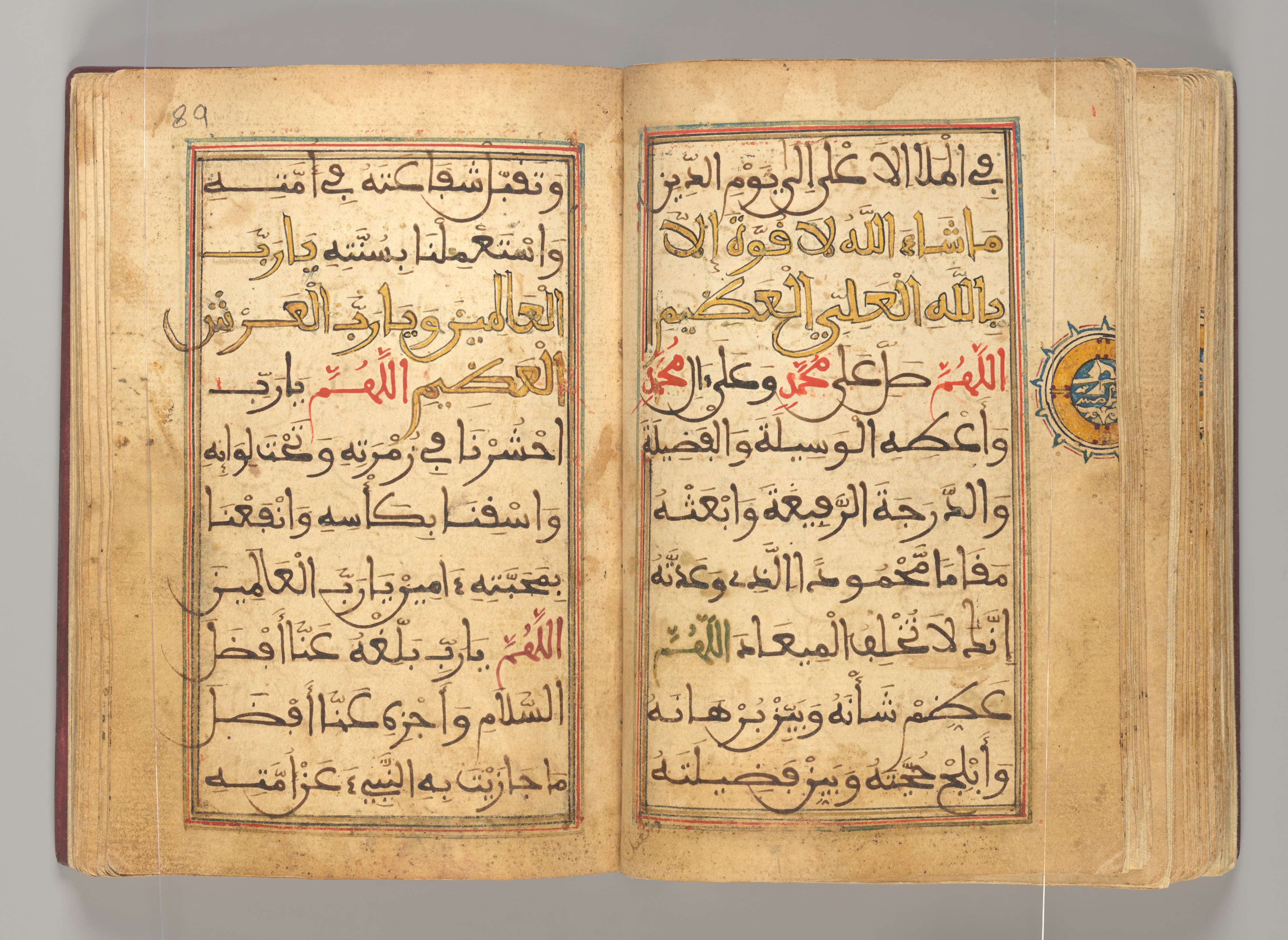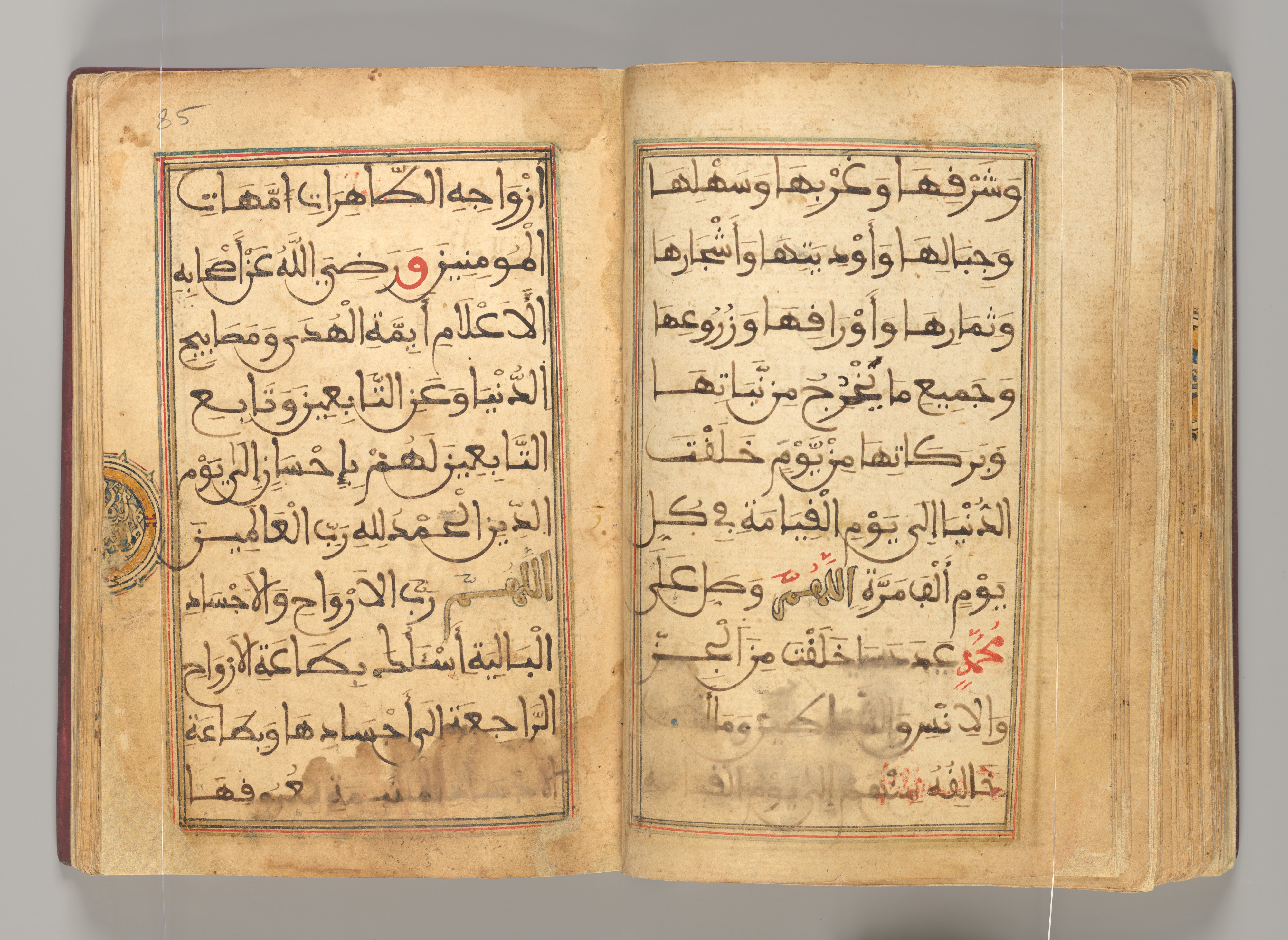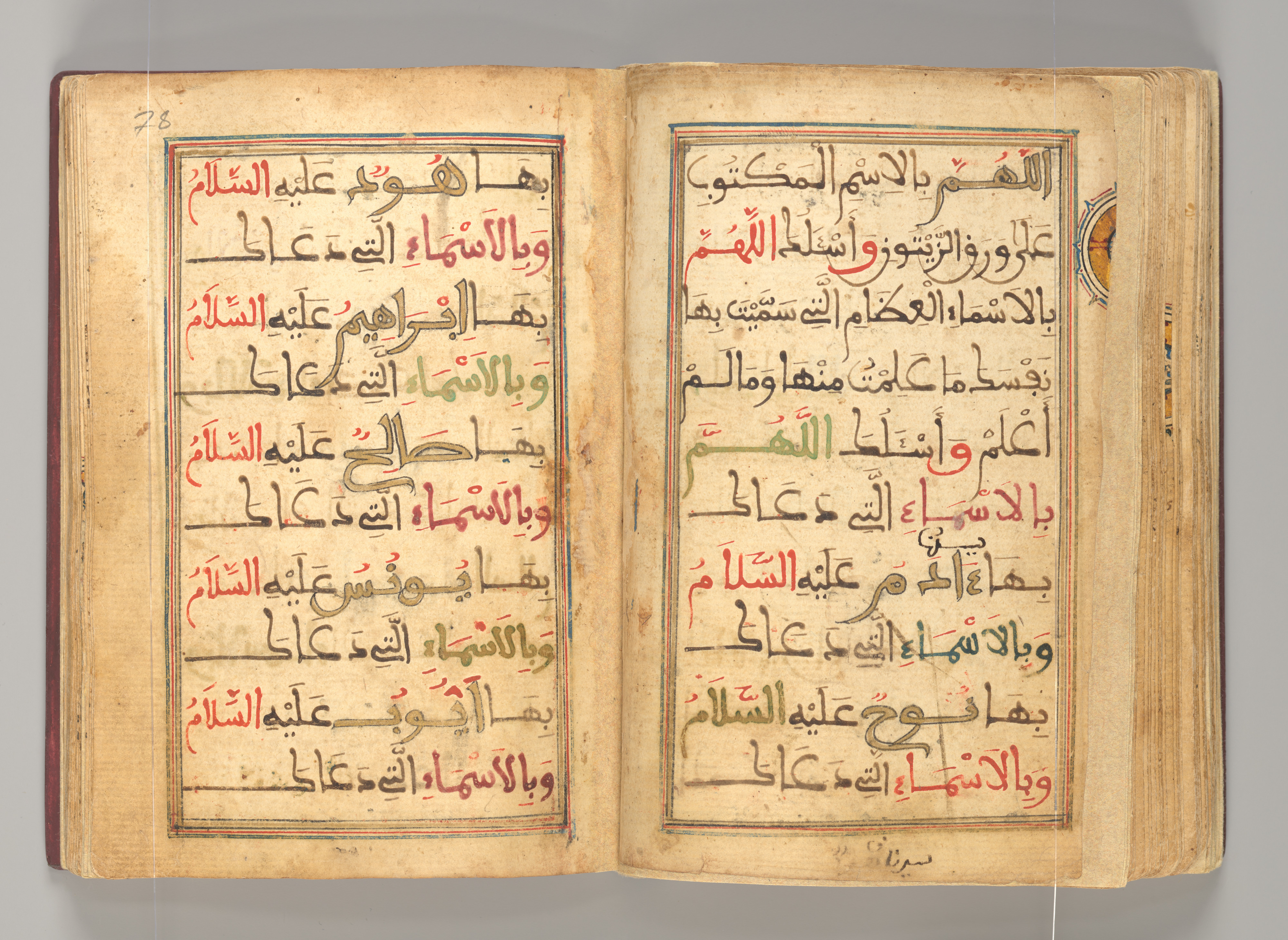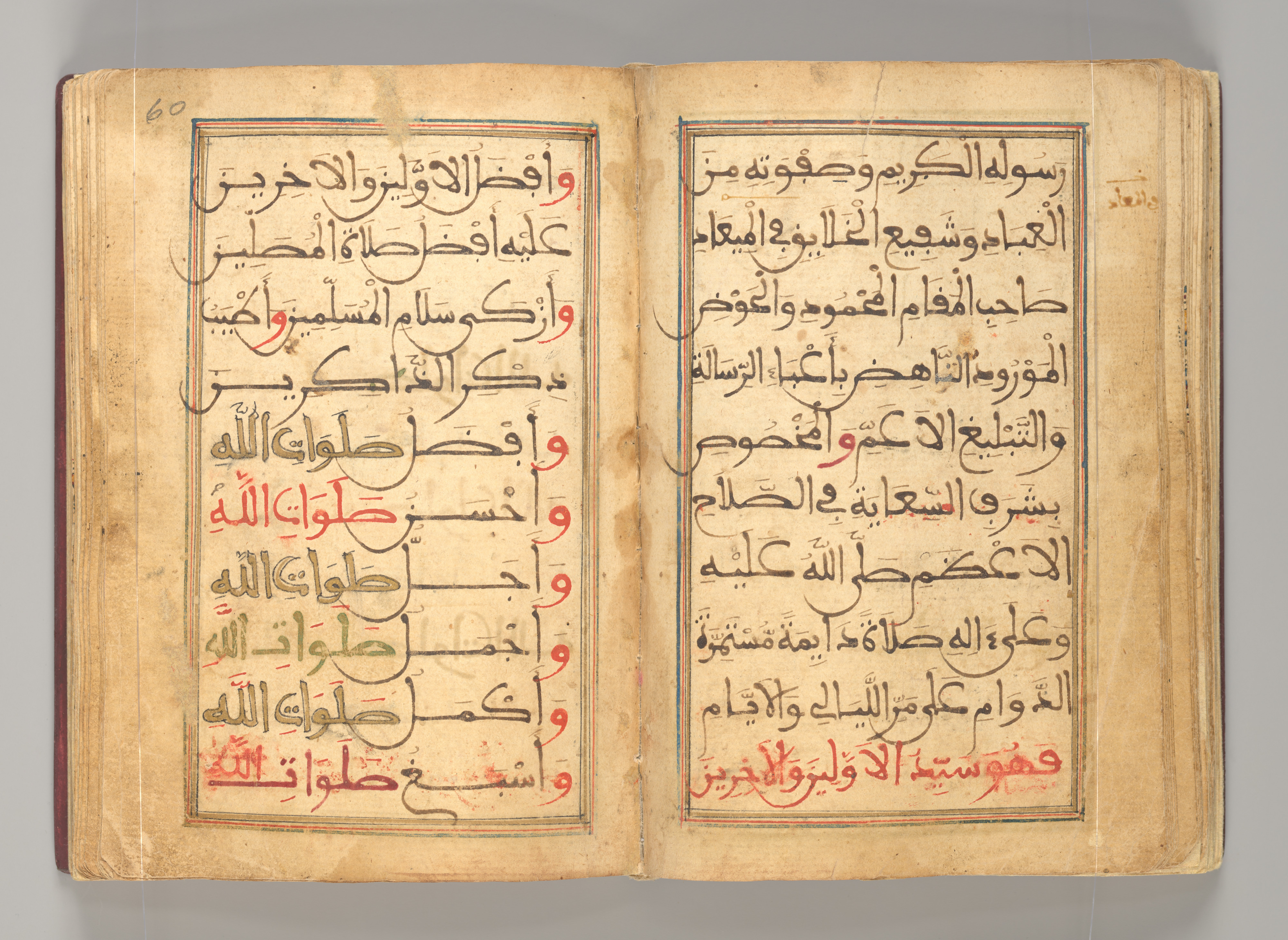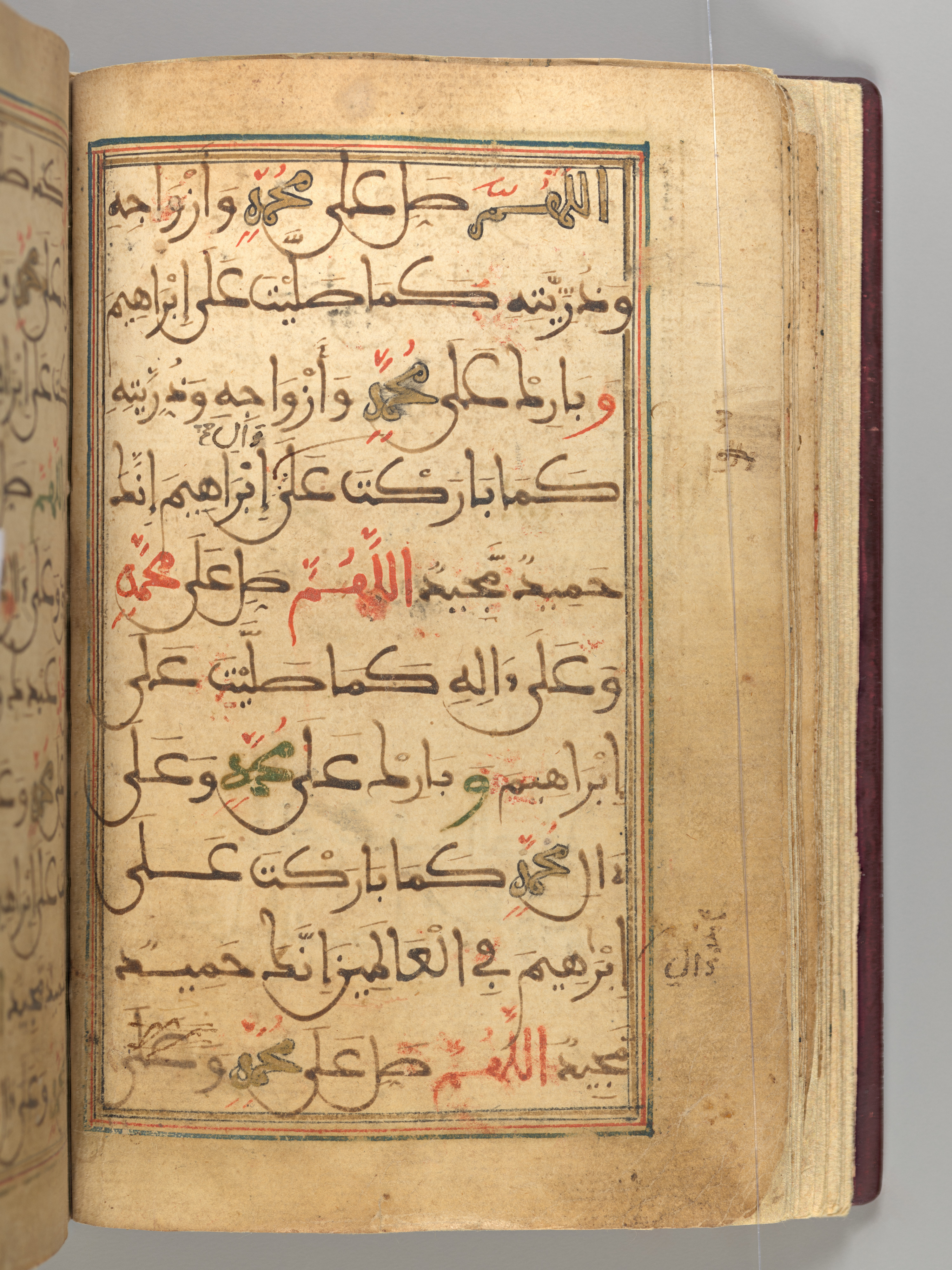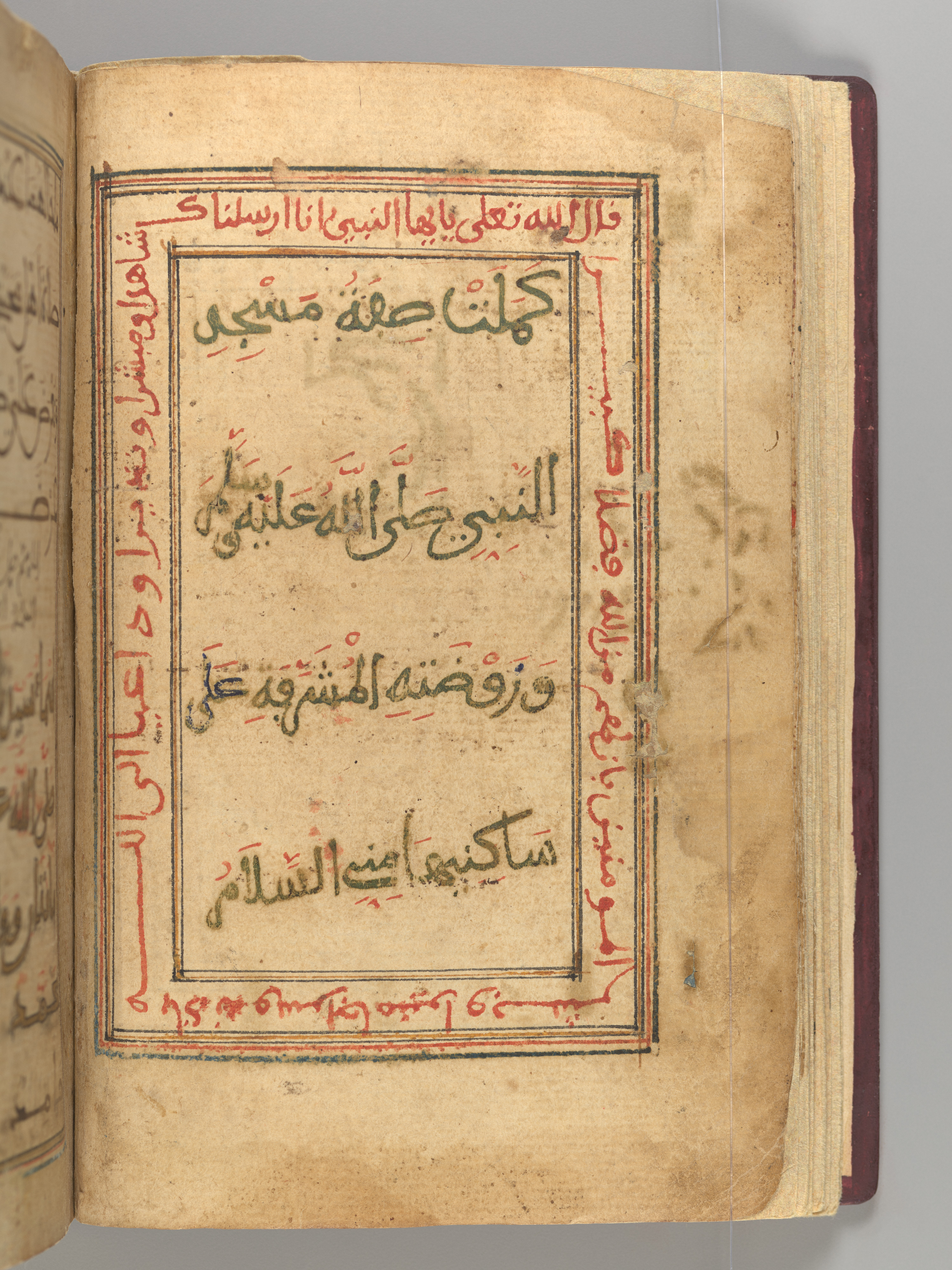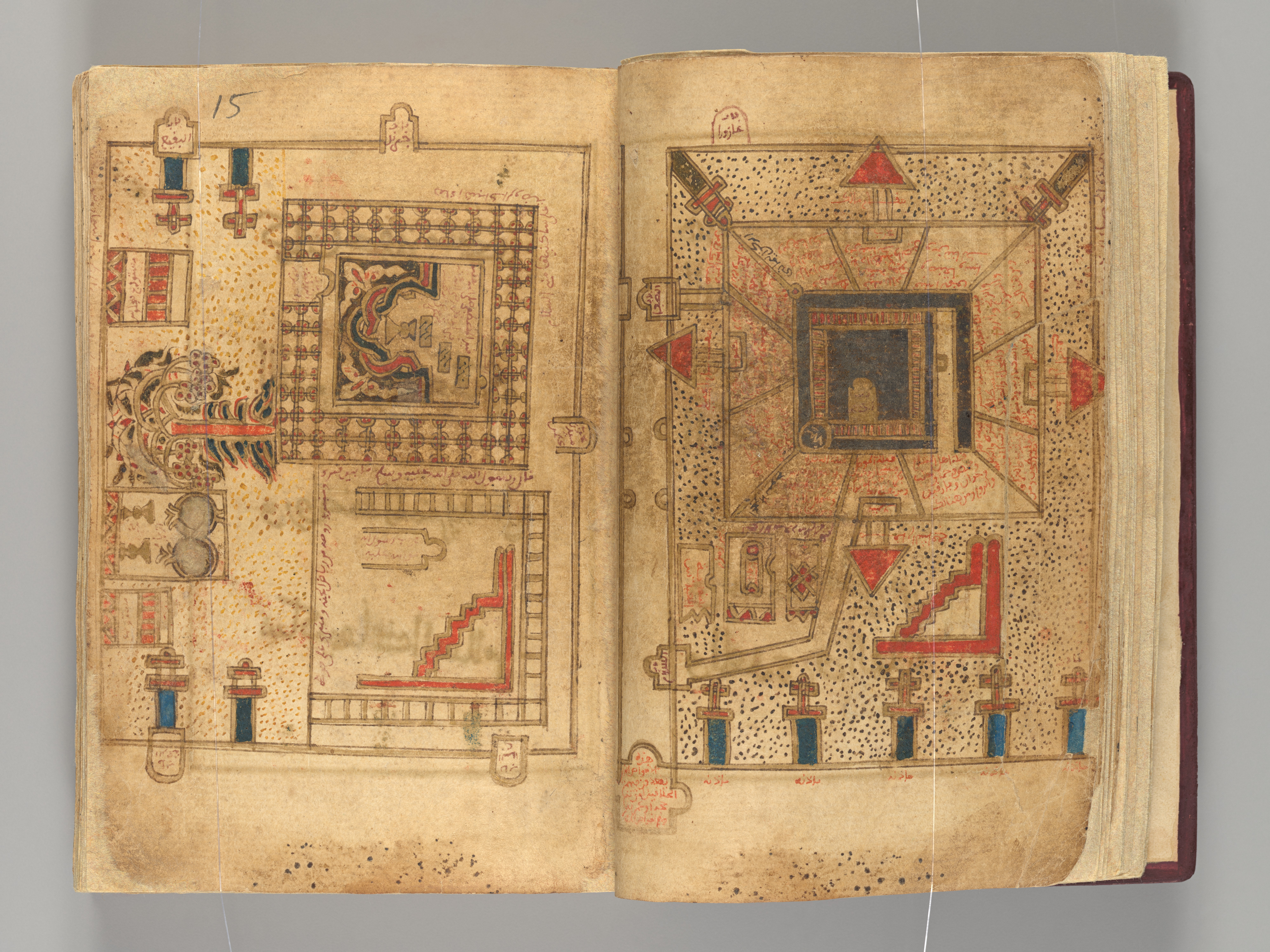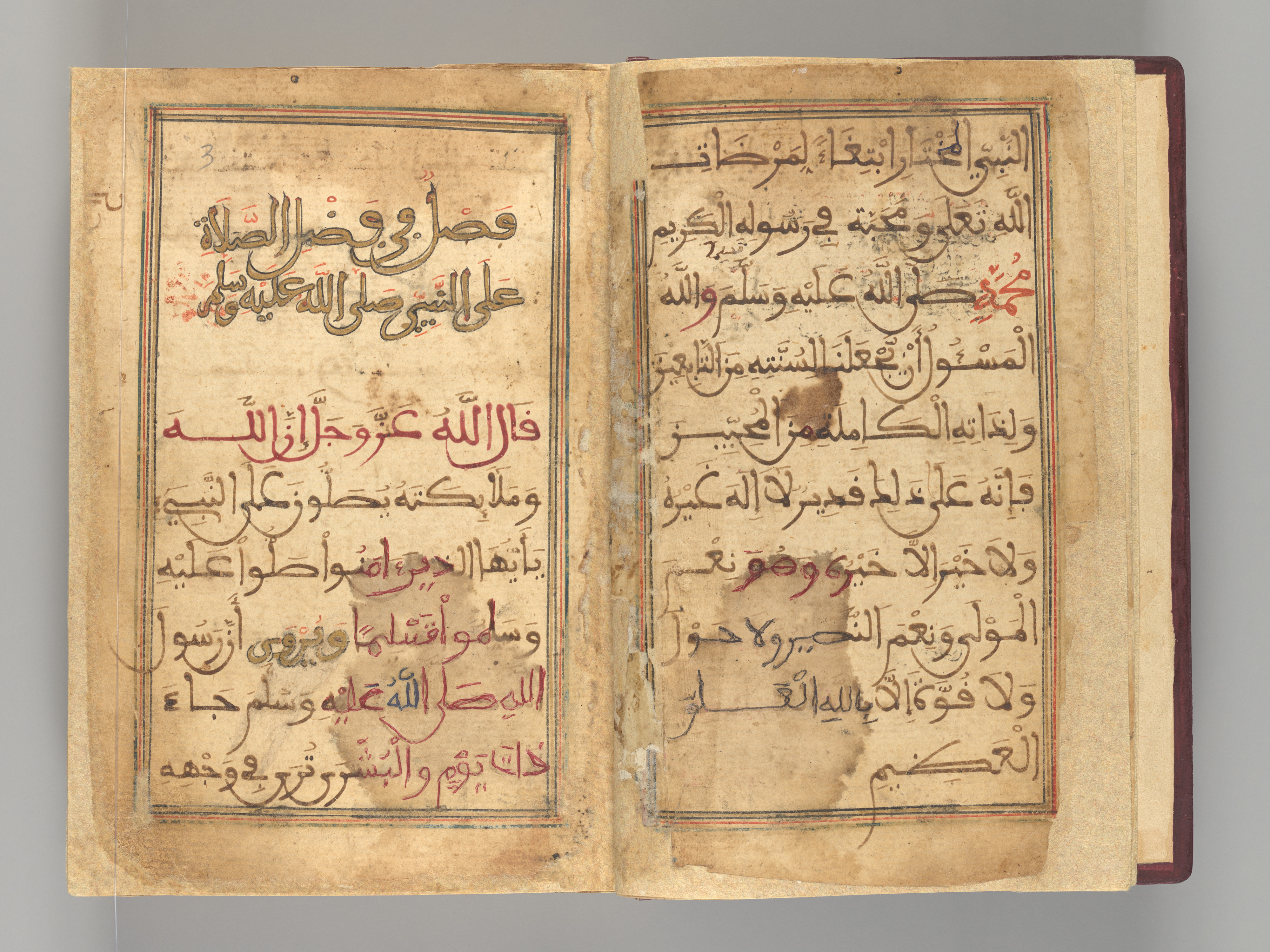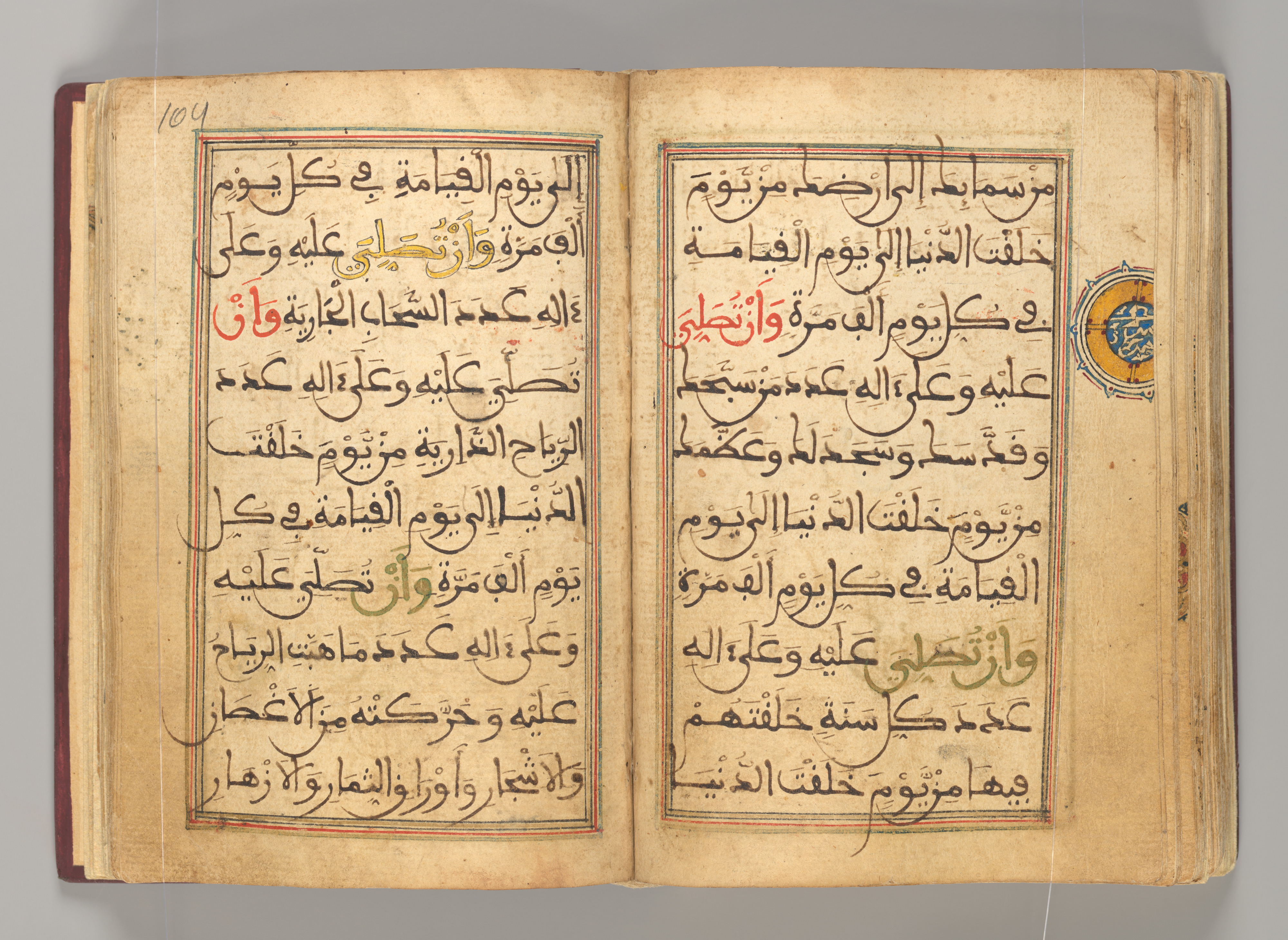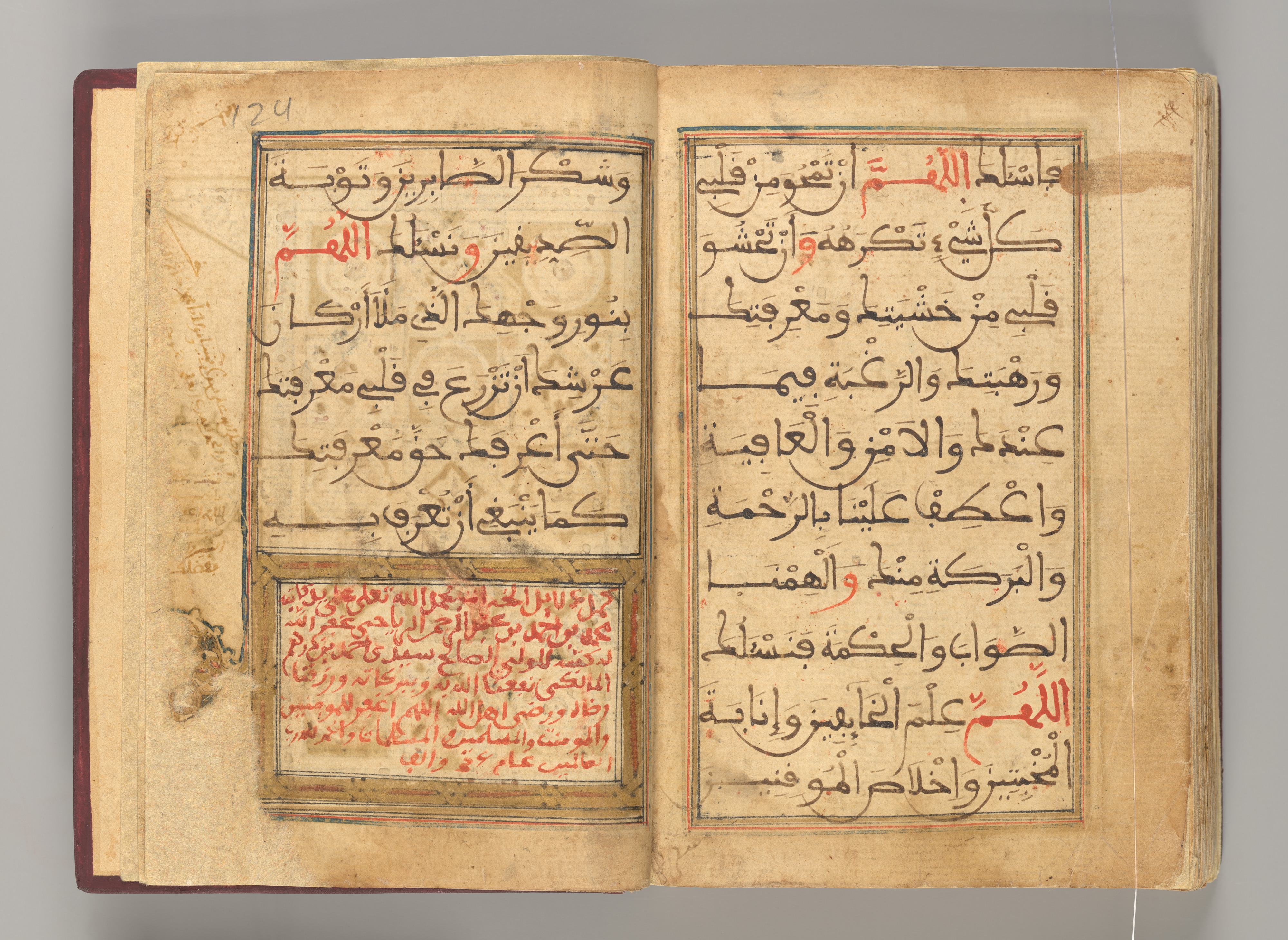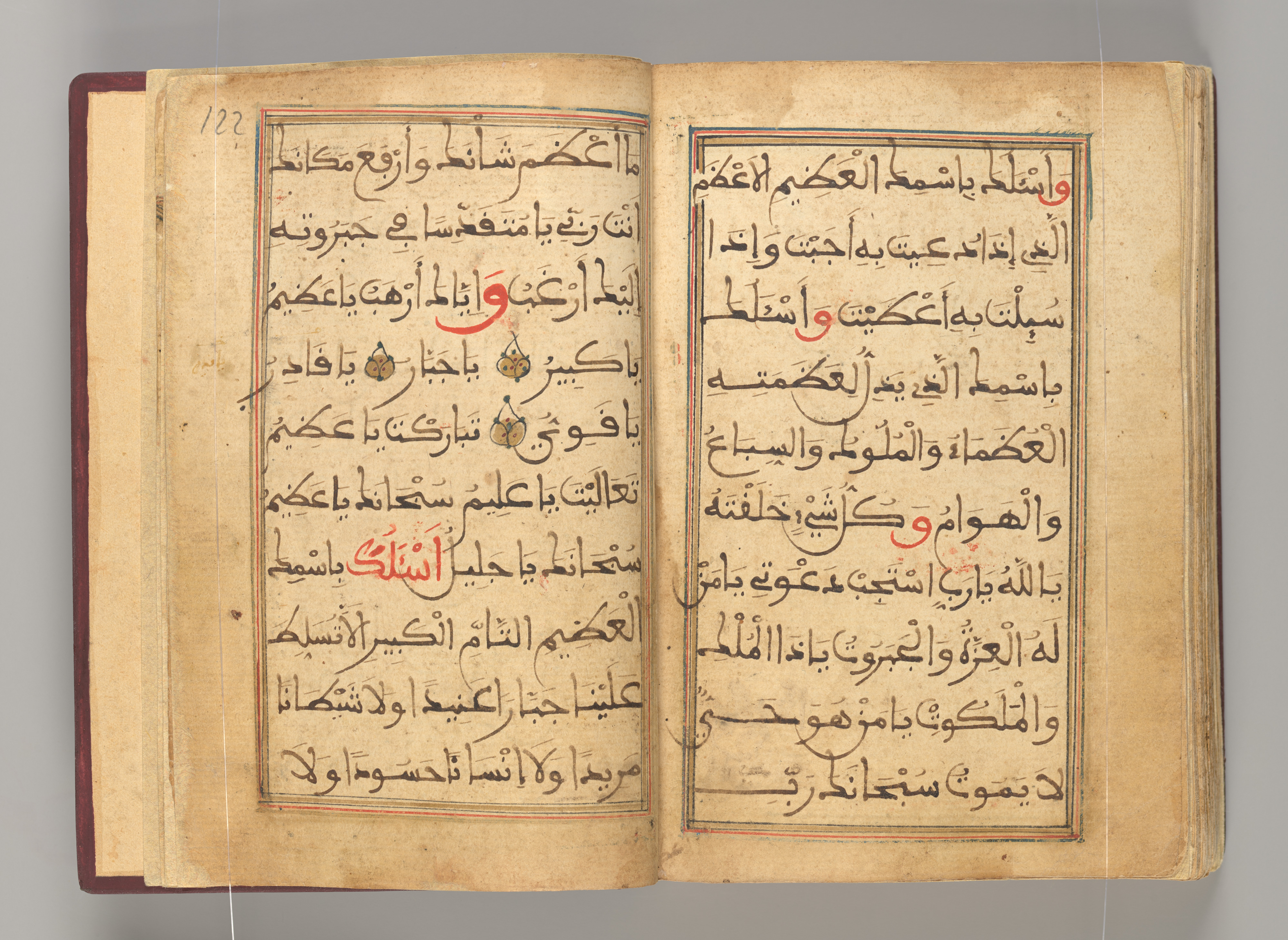Dala'il al-Khayrat Prayer Book
Calligrapher Muhammad bin Ahmad bin 'Abd Al-Rahman Al-Riyahi
Author Muhammad b. Sulayman al-Jazuli
Patron Ahmad bin Dirham al-Maliki
Not on view
This manuscript is one of the earliest dated and illustrated copies of the renowned Dala'il al-Khayrat (Proofs of Good Deeds), an Arabic text and collection of prayers meant as blessings for the Prophet Muhammad. Composed in Morocco in the mid-fifteenth century by the Moroccan Sufi and mystic scholar Muhammad b. Sulayman al-Jazuli (d. 1465), the text gained popularity from the sixteenth century onward and spread throughout northern Africa and other parts of the Islamic world, making its way as far east as China. As a manual of devotion for the Prophet, it became one of the most copied religious and devotional texts in Sunni Islam, after the Qur'an. Carrying the manuscript and reciting the prayers it contains is thought to provide blessing (baraka), good luck, and protection. Variations of the text and different artistic schools that produced Dala'il manuscripts existed across the Islamic world. The text of this codex, which reflects particularities of the North African tradition, is calligraphed in large black maghribi script, ten lines per page, framed by gold and polychrome rulings; important words are in gold outlined in black, while others are in red, blue, pink, or green. Rectangular illuminated cartouches with a round, drop-like medallion on the side indicate chapter headings. The final bifolio consists of a double, fully illuminated composition of geometric interlacing evocative of a carpet. Common for the Dala'il, this lavish copy contains four illustrations of Mecca, including depictions of the Holy Ka'ba, and Medina, where the Prophet is buried next to his companions and caliphs, 'Umar and Abu Bakr.
Due to rights restrictions, this image cannot be enlarged, viewed at full screen, or downloaded.
This artwork is meant to be viewed from right to left. Scroll left to view more.


